Recent findings
Published
25 Jan 2021
Share this article
Our 70-strong team of archaeologists working in Trinity Burial Ground have started piecing together intriguing clues from the past.
We’ll be documenting some of the interesting artefacts found while working on site so why not take a look below at our recent findings.
Pendant frame
A small copper alloy circular or oval pendant frame, which would have held a flat object such as a lens. Either this has not survived or was missing at the time of burial. It would have been suspended via a small loop at the top of the frame, and would have hung from a chain or ribbon.
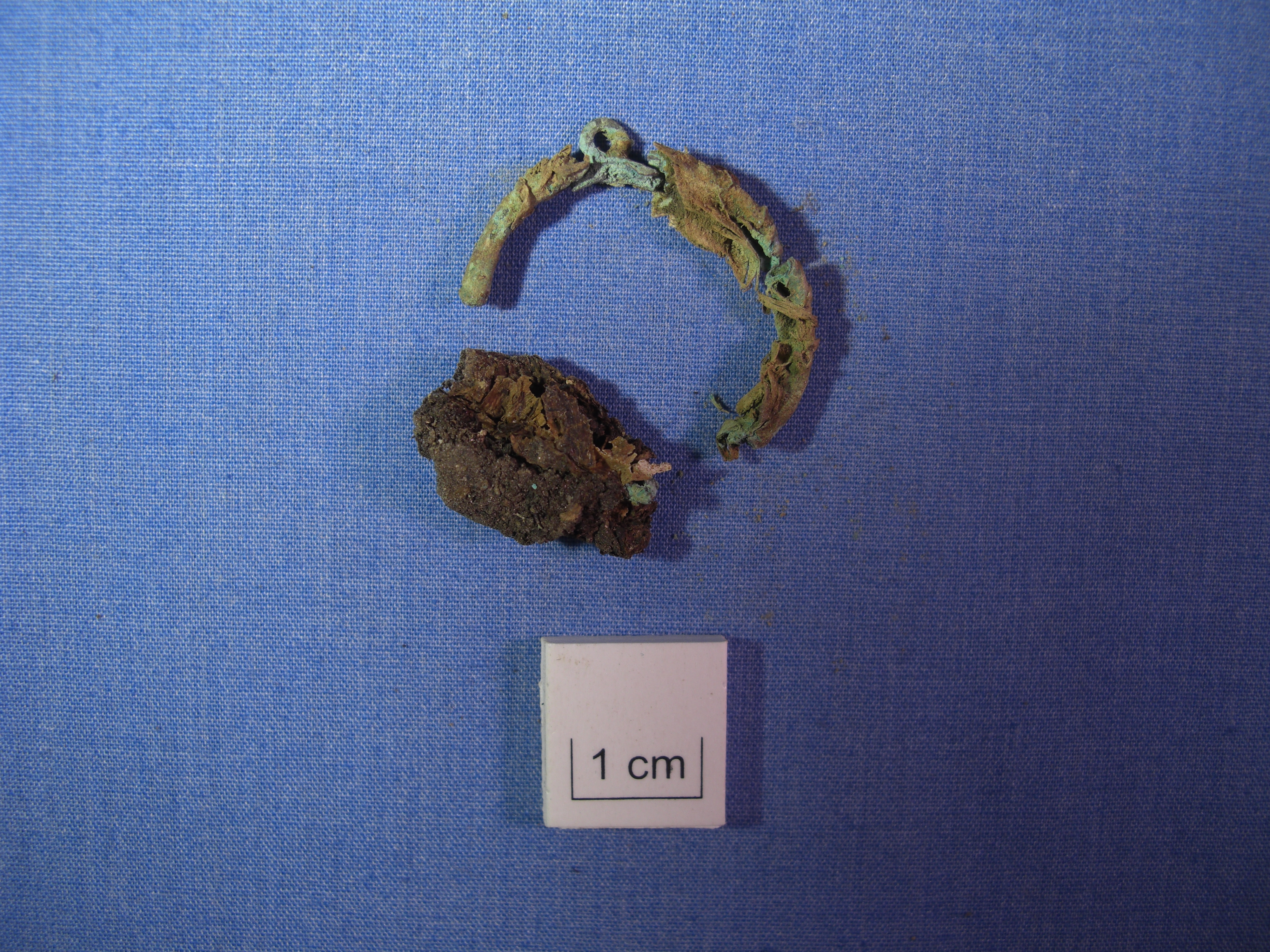
Have you found anything similar during an excavation you were part of? Tell us your stories at A63CastleStreet.Hull@highwaysengland.co.uk.
Fisherwifes plate
During the excavation the team found about twenty burials associated with complete ceramic vessels, generally plates of one type or another. Unlike some of the other things we've found, these are clearly not items that have been mislaid or thrown away, but instead have been deliberately placed with the individual before they were buried and while the coffin was open. In fact, these 'plate burials' have been observed during the excavation of other contemporary cemeteries in London, Birmingham, and just across the river at Barton upon Humber.
They are thought to relate to a tradition that persisted well into the late nineteenth century, albeit one that is described at that time as something of a curiosity. Apparently, a plate with several spoonfuls of salt was placed on the corpse during the wake (which was generally held at home well into the nineteenth century), for the purposes of warding off evil. As such, it performed much the same function as throwing spilt salt over your left shoulder. It is thought that the plate was generally removed prior to the sealing of the coffin lid but, on occasion, people may have forgotten, and on others we could imagine family members might believe the deceased needed a bit of extra help when it came to allaying evil!
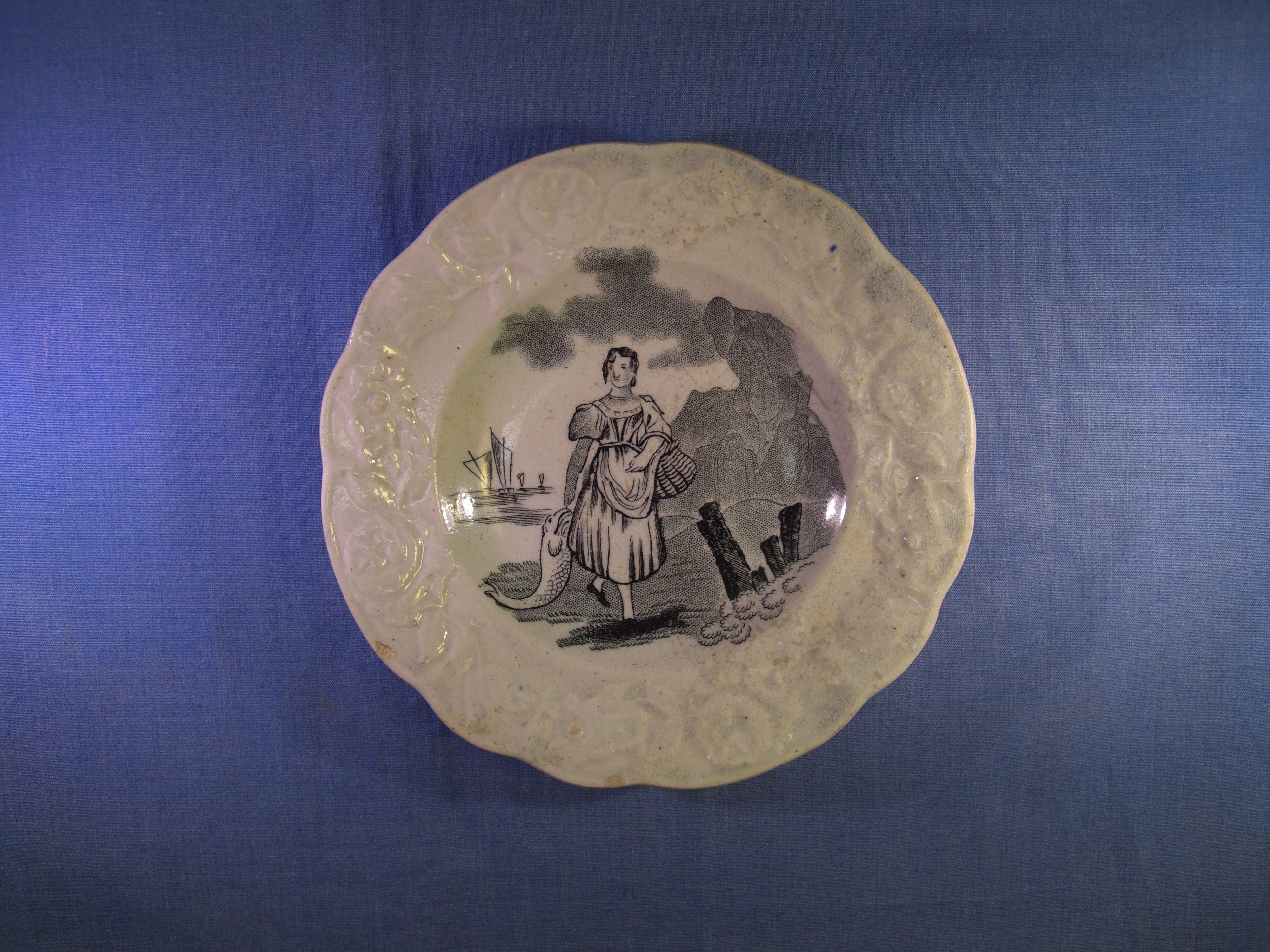
The plate pictured was found with an adult female skeleton and is unique among those found from Trinity Burial Ground. It's actually a child's nursery plate, and is just 135mm in diameter, so an interesting choice. It depicts a fishwife (essentially a woman engaged with processing and selling fish) dragging something like a cod that's too big for her basket. Her style of dress suggests a depiction of c 1810-1840, which ties in well with a date c 1834-1850 for the plate, which we think was made by William Ridgeway & Co.
Indeed, the image on the plate, with the fishing smacks in the background and the woman with her bare arms and practically shortened dress, is very similar to Winslow Homer's 1881 painting of three Cullercoats Fishlasses, which presents a rather kinder image than the term 'fishwife' presents today!
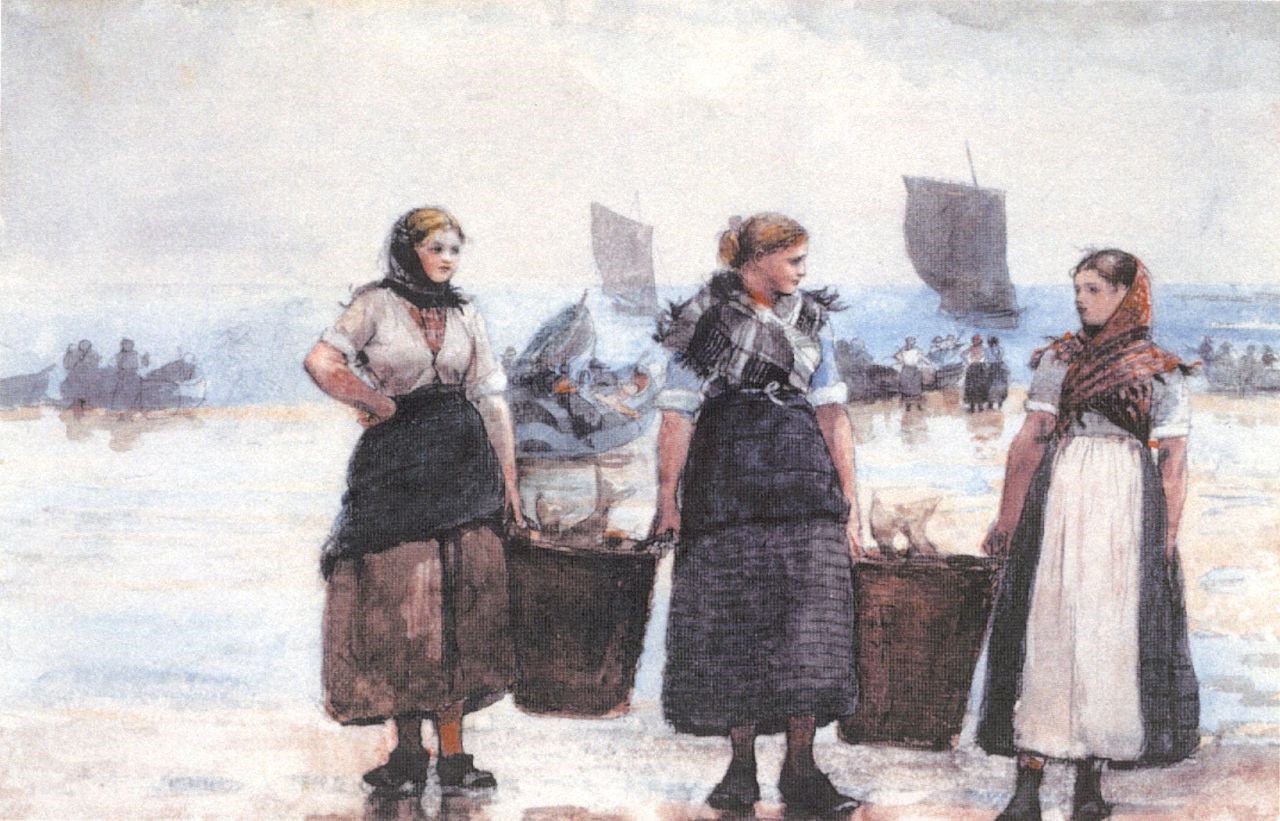
Have you found anything similar during an excavation you were part of? Tell us your stories at A63CastleStreet.Hull@highwaysengland.co.uk.
Hair Pin
Two copper alloy hair pins covered with a thin layer of gold or gold paint. They were hollow cast in two halves with relief decoration.
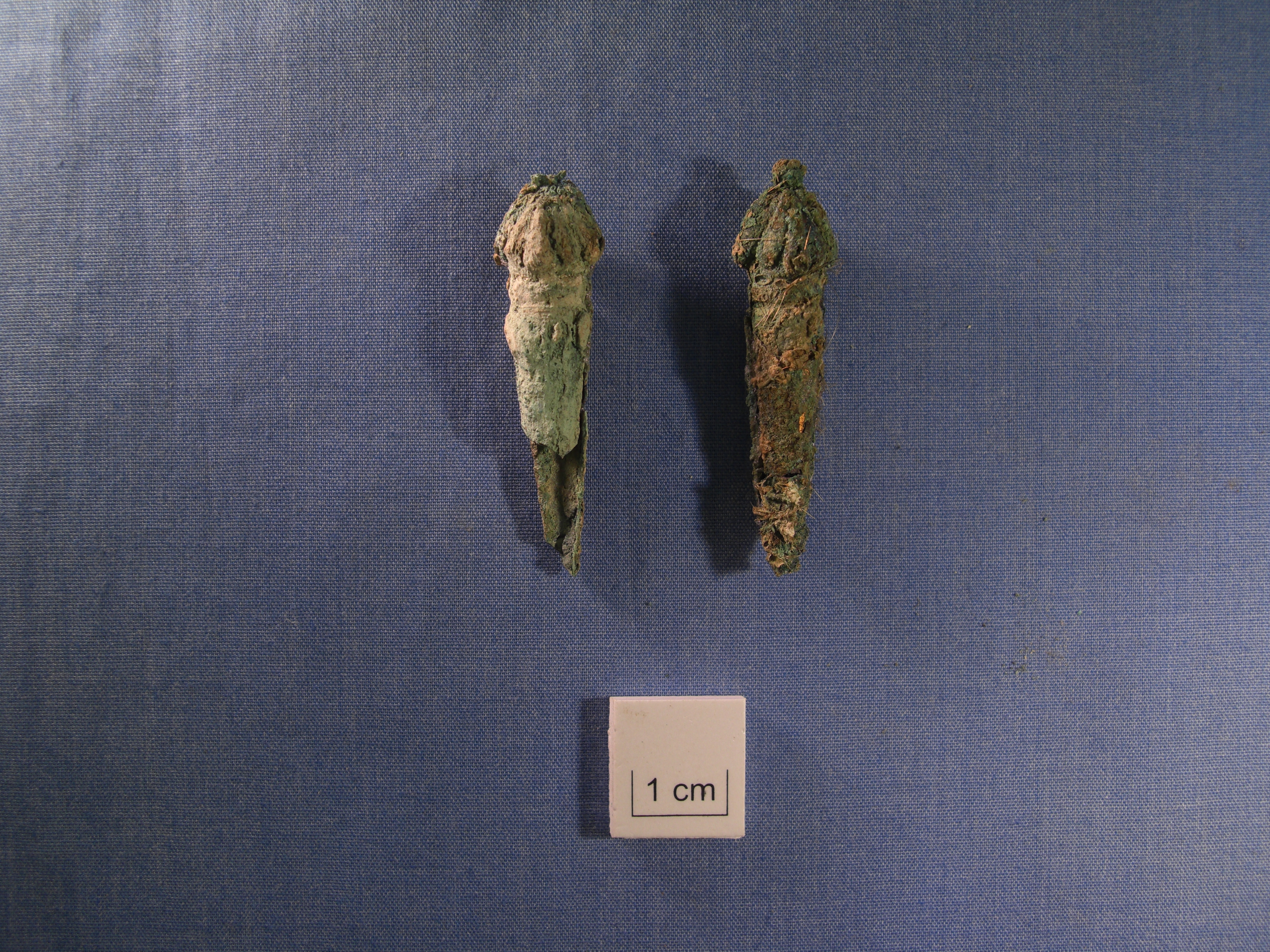
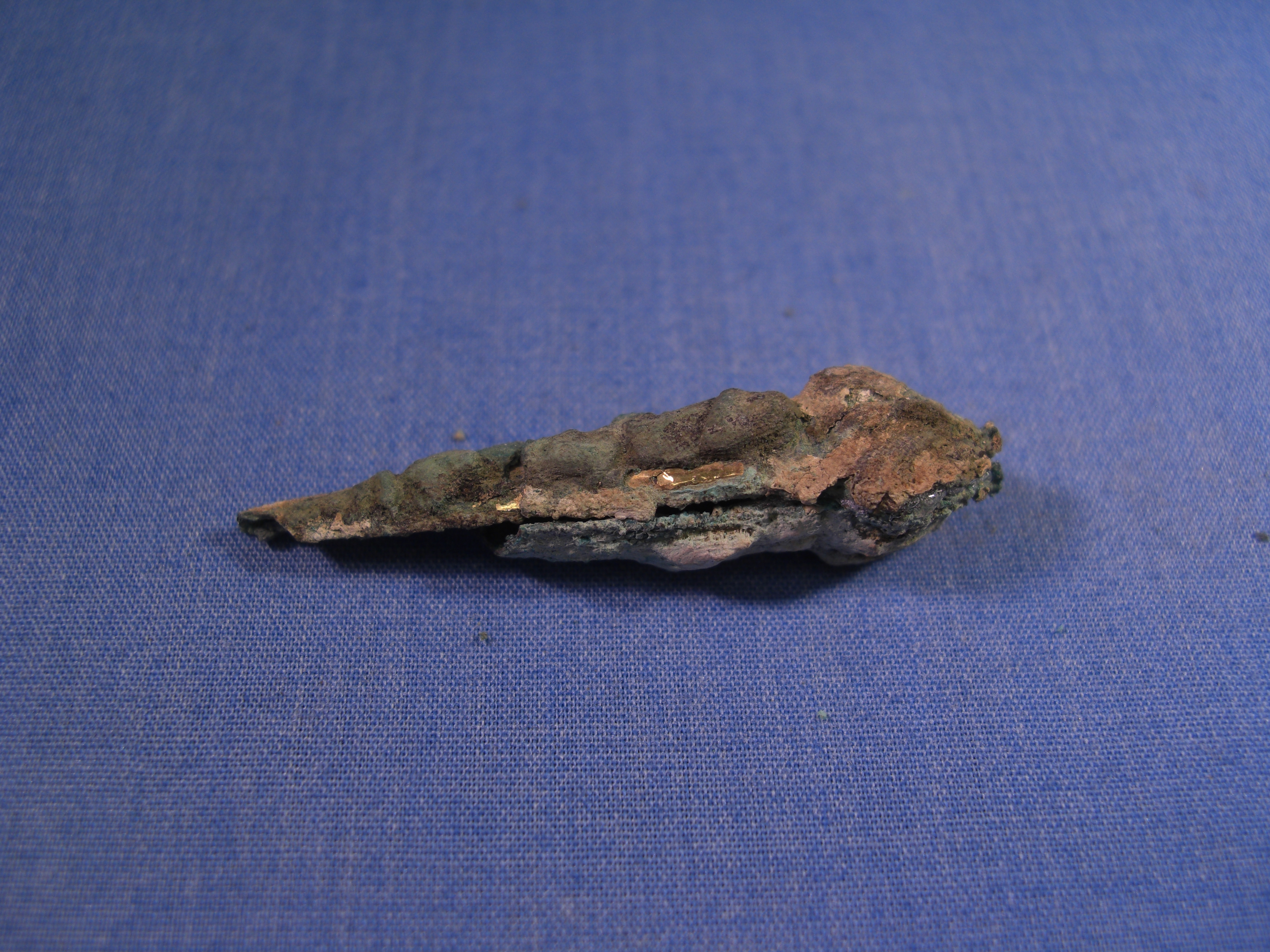
Have you found anything similar during an excavation you were part of? Tell us your stories at A63CastleStreet.Hull@highwaysengland.co.uk.
Coin stack
A stack of two coins found together. One is a farthing of William IV dated between 1831-1837. The second coin is an 1820s 2 lepta of the Greek Ionian Islands. The Islands had been under the rule of the Republic of Venice until its dissolution, and the head of this coin (or obverse), shows the Venetian lion of St Mark holding a bible and arrows. The British took control from the French between 1809-1814. They were under British administration until 1864 when they were reunited with Greece.
The heads (obverses) of the coin stack. The topmost (left-hand) coin is the 2 lepta coin.
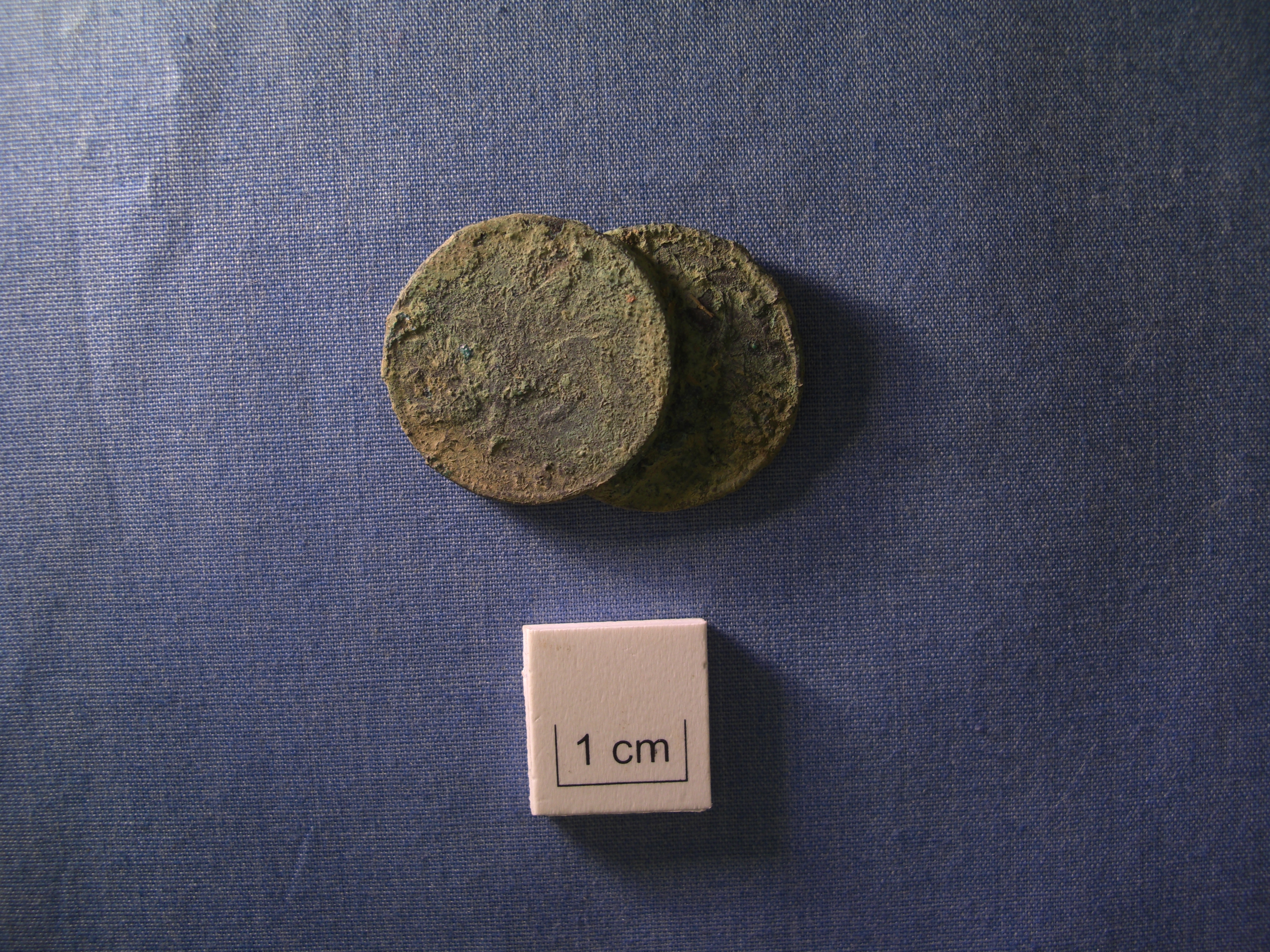
The tails (reverses) of the coin stack.
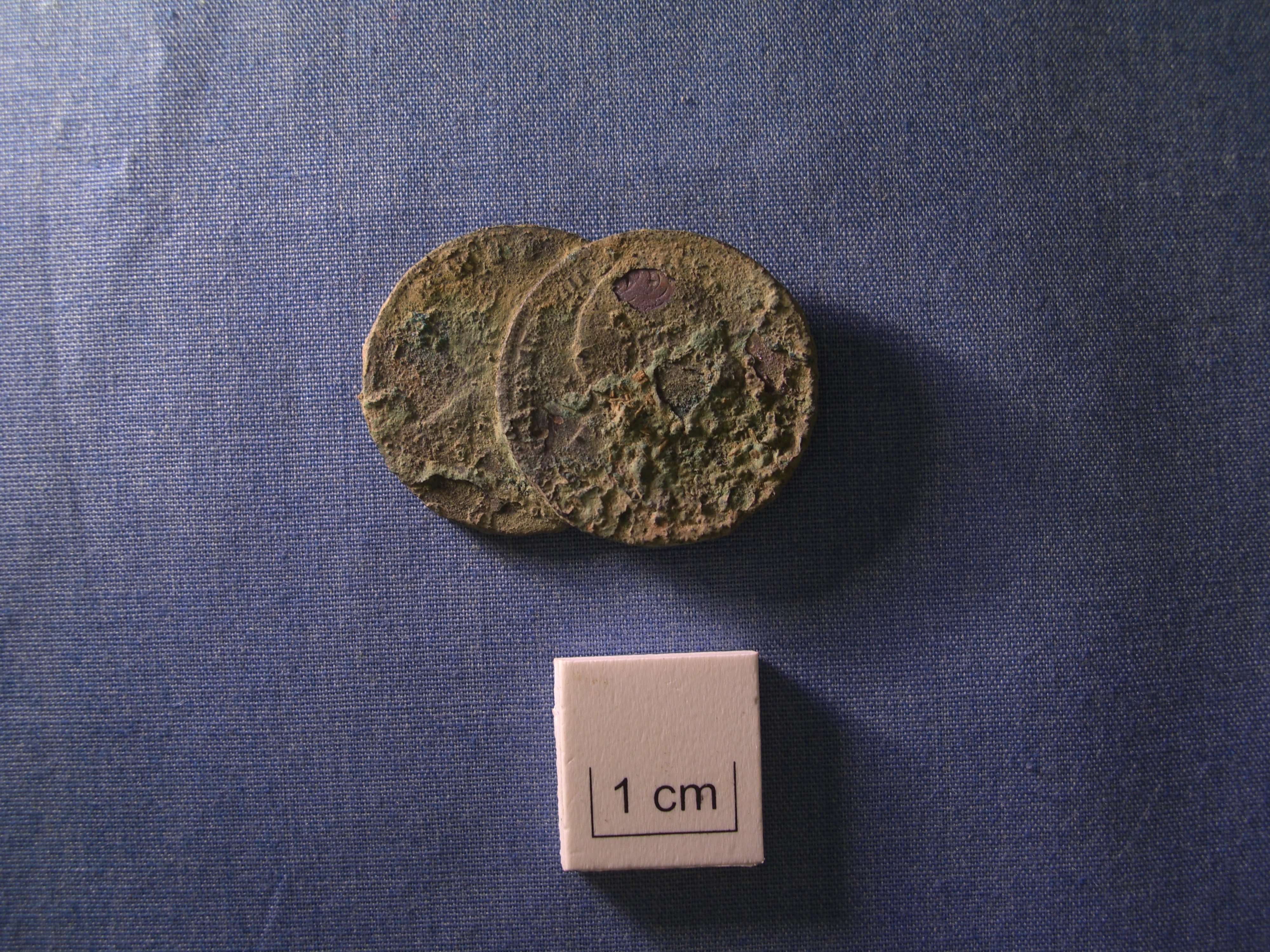
Have you found anything similar during an excavation you were part of? Tell us your stories at A63CastleStreet.Hull@highwaysengland.co.uk.
Bone thread spool
A turned bone thread spool, used in textile manufacture. There are holes to secure the threads, and at the top is a sharp-edged cut into the bone to act as a thread cutter. The screw thread at the narrow end is made in two pieces.
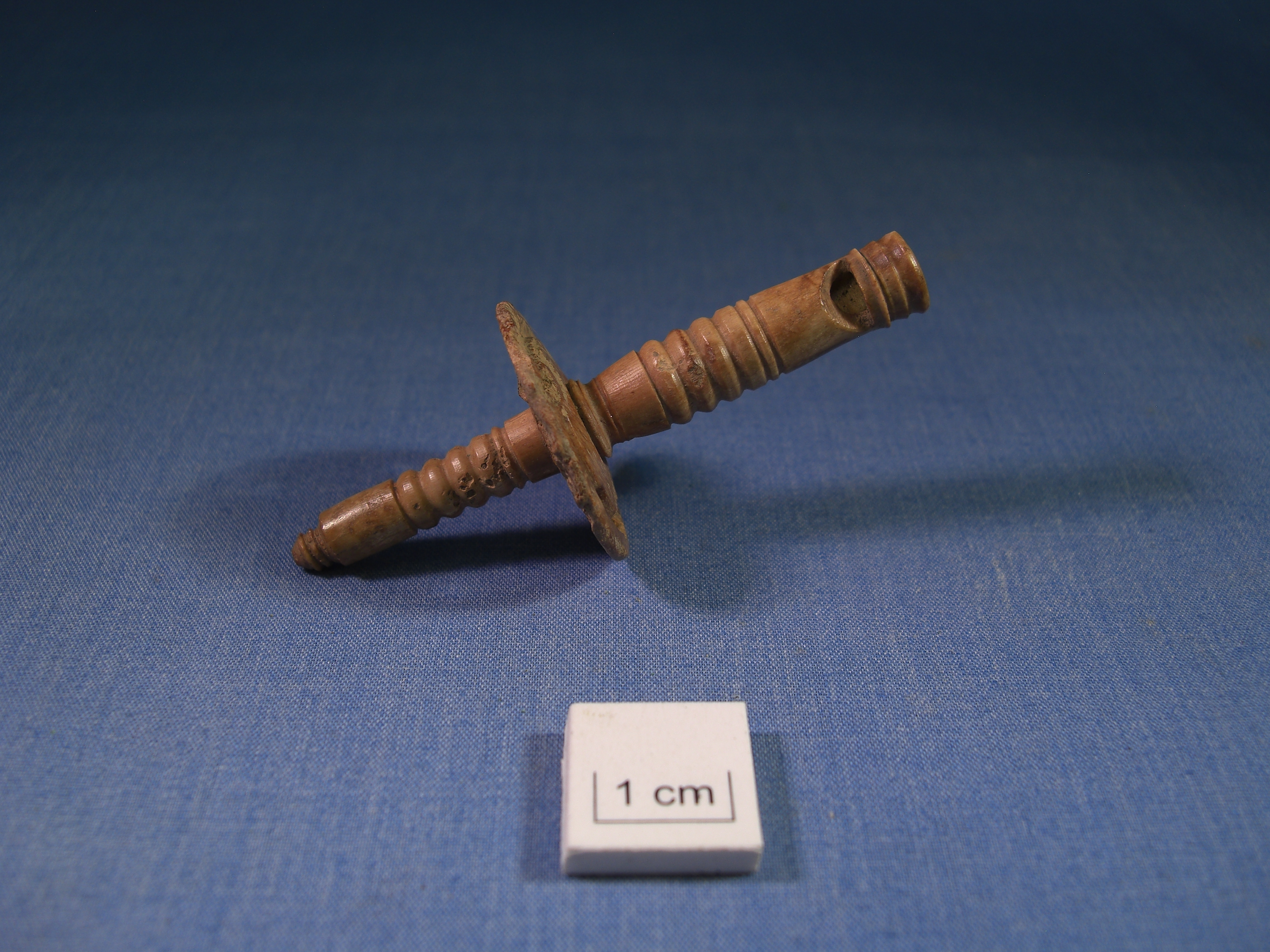
Have you found anything similar during an excavation you were part of? Tell us your stories at A63CastleStreet.Hull@highwaysengland.co.uk.
Ceramic sheep
The lamb is an early 19th century Staffordshire miniature lamb ornament.
These are presented on a small plinth or stool, which in this case is absent and were once sold in pairs, facing each other.
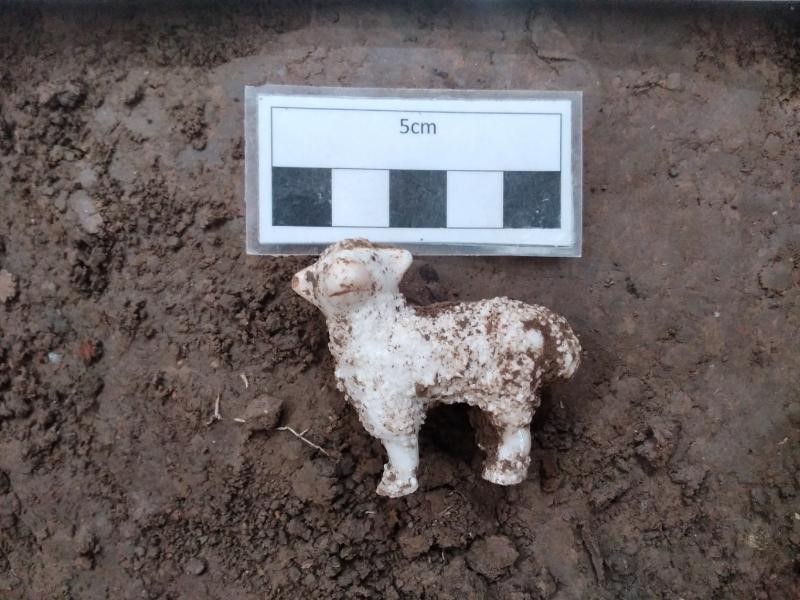
It is thought to belong to a young child as a toy after the base was damaged.
Have you found anything similar during an excavation you were part of? Tell us your stories at A63CastleStreet.Hull@highwaysengland.co.uk.
Ceramic Tankard
A near complete pearlware tankard, dating to around 1800-1820. It shows the ceremony when a navy ship enters active service and the commanding officer first boards, known as commissioning. This is because the ship is flying its commissioning pennant, a streaming flag at the masthead, which is red with a St George’s cross. The tankard also shows a pattern of strawberries on either side of the ship.
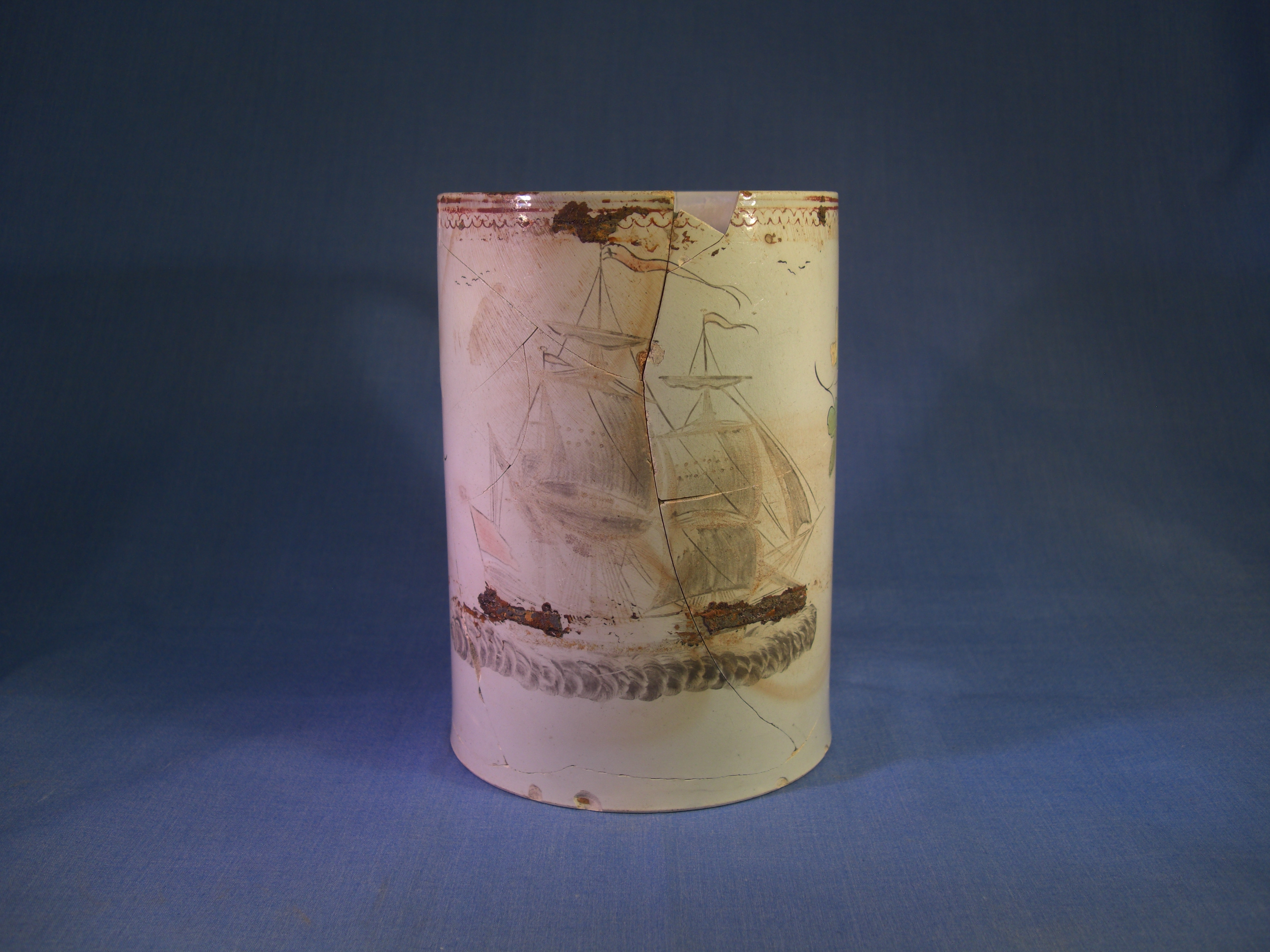
Pearlware was a type of refined earthenware first introduced by Josiah Wedgwood in the late eighteenth century, trying to emulate the finish of Chinese porcelain. This ceramic had a blue-tinged glaze due to the incorporation of cobalt. It provided a good base for brightly coloured enamel. This tankard has enamel decoration in grey, red, green and yellow.
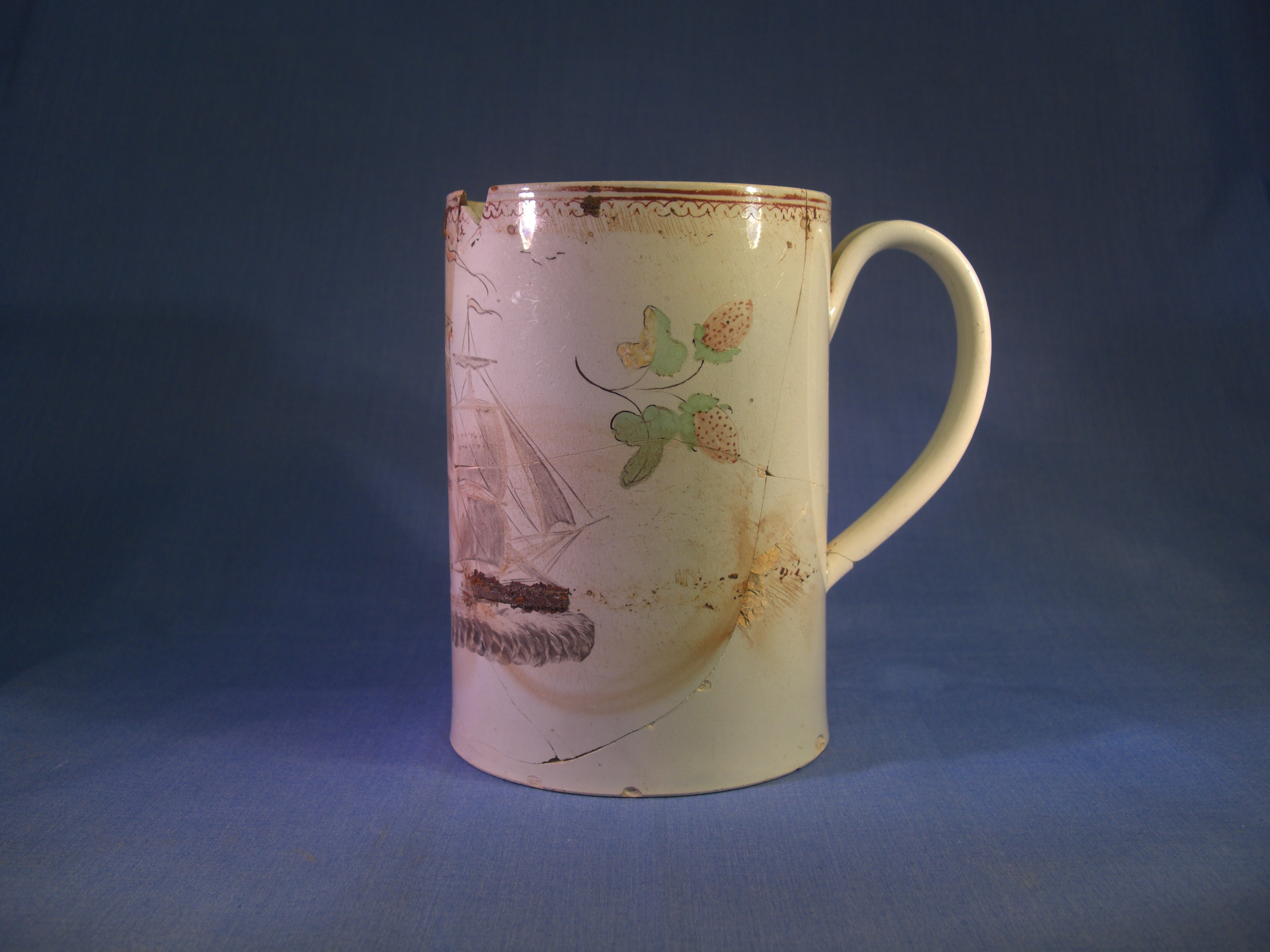
Have you found anything similar during an excavation you were part of? Tell us your stories at A63CastleStreet.Hull@highwaysengland.co.uk.
Trade bead
This glass bead is tubular and cobalt blue. The bead was made by twisting the glass around a rotating rod and the twists can just be seen on the surface. It is one of a number of bead types that were produced in Europe in large quantities from the 17th to the 19th Centuries. These are frequently found in European colonies and Africa, where they were part of a suite of goods traded for slaves. When found in the Americas and Africa they are often referred to as ‘Trade beads’. These have not had much recognition here in the UK and some may have been confused with earlier beads of the Saxon and Roman periods, when found as isolated objects.
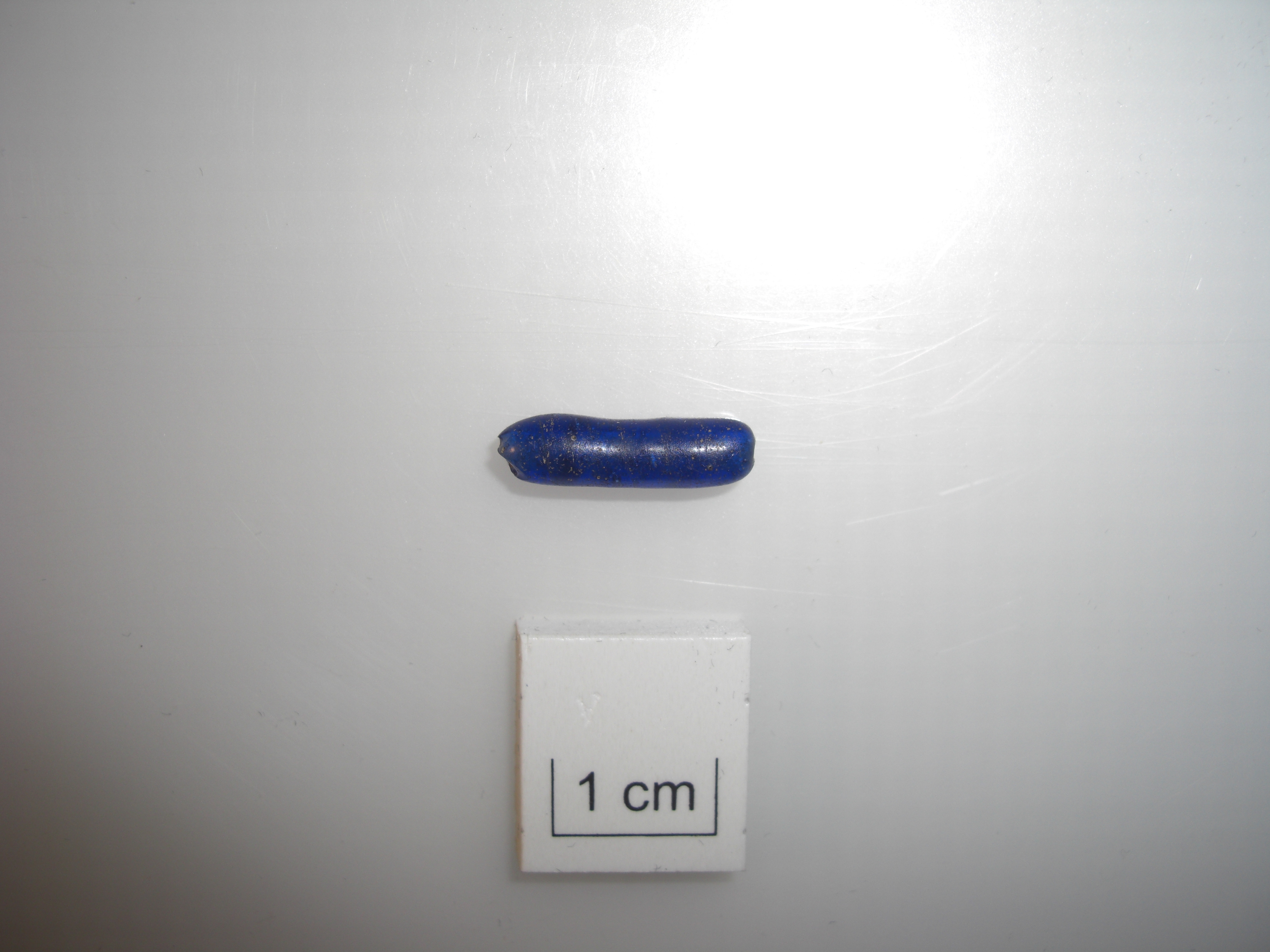
There were many thousands more of these beads made on the continent than in Britain (e.g. in the Netherlands, France, Bohemia & of course Venice) and this bead is more likely to have been one imported here for use in the British domestic market as jewellery.
Have you found anything similar during an excavation you were part of? Tell us your stories at A63CastleStreet.Hull@highwaysengland.co.uk.
Pair of Royal Navy buttons
A pair of probable Royal Navy buttons, bearing a fouled anchor, which was used as a cufflink. The design is of the period 1774-1812, in use during the naval battles of the American War of Independence (1775-1783) and the Napoleonic Wars (1803-1815). A small piece of preserved textile has adhered to the surface.
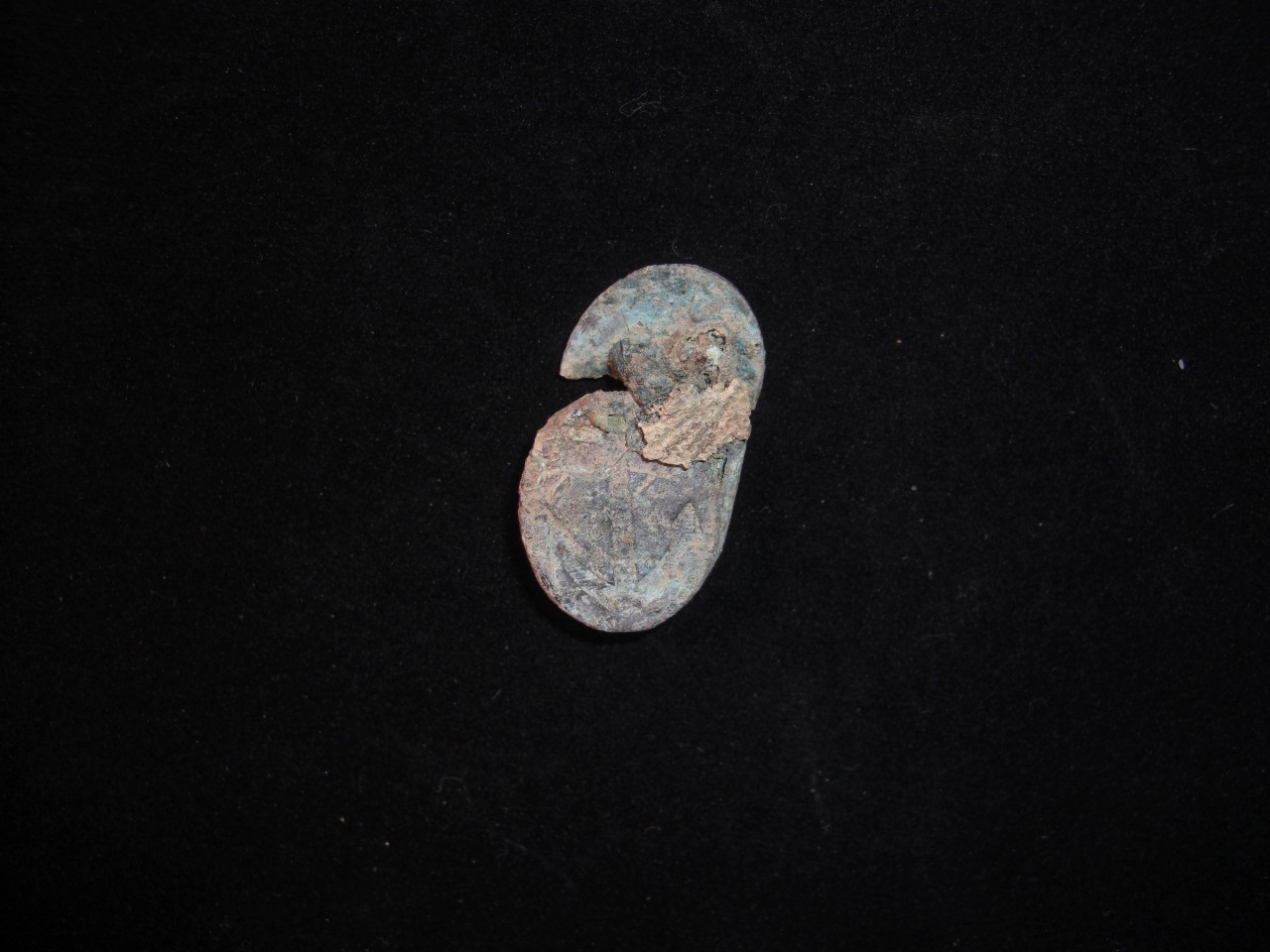
Have you found anything similar during an excavation you were part of? Tell us your stories at A63CastleStreet.Hull@highwaysengland.co.uk.
Earrings
A pair of gilt copper alloy hoop earrings, with silver fastening wires. These earrings are a perennially fashionable type which would not look out of place today.

Have you found anything similar during an excavation you were part of? Tell us your stories at A63CastleStreet.Hull@highwaysengland.co.uk.
Spectacle glass lens
It might not be immediately apparent that this is glass as it is opaque. Glass can deteriorate or weather when buried in the ground for long periods of time, particularly when the ground is moist. Glass usually weathers in layers, forming a crust on the outside which has an iridescent sheen. It’s unclear whether this lens was coincidentally buried in one of the graves, or if it was deliberately laid with the burial. It’s possible it was used in lieu of a coin over the eyes, or placed within the burial because the individual needed it to see in the afterlife.
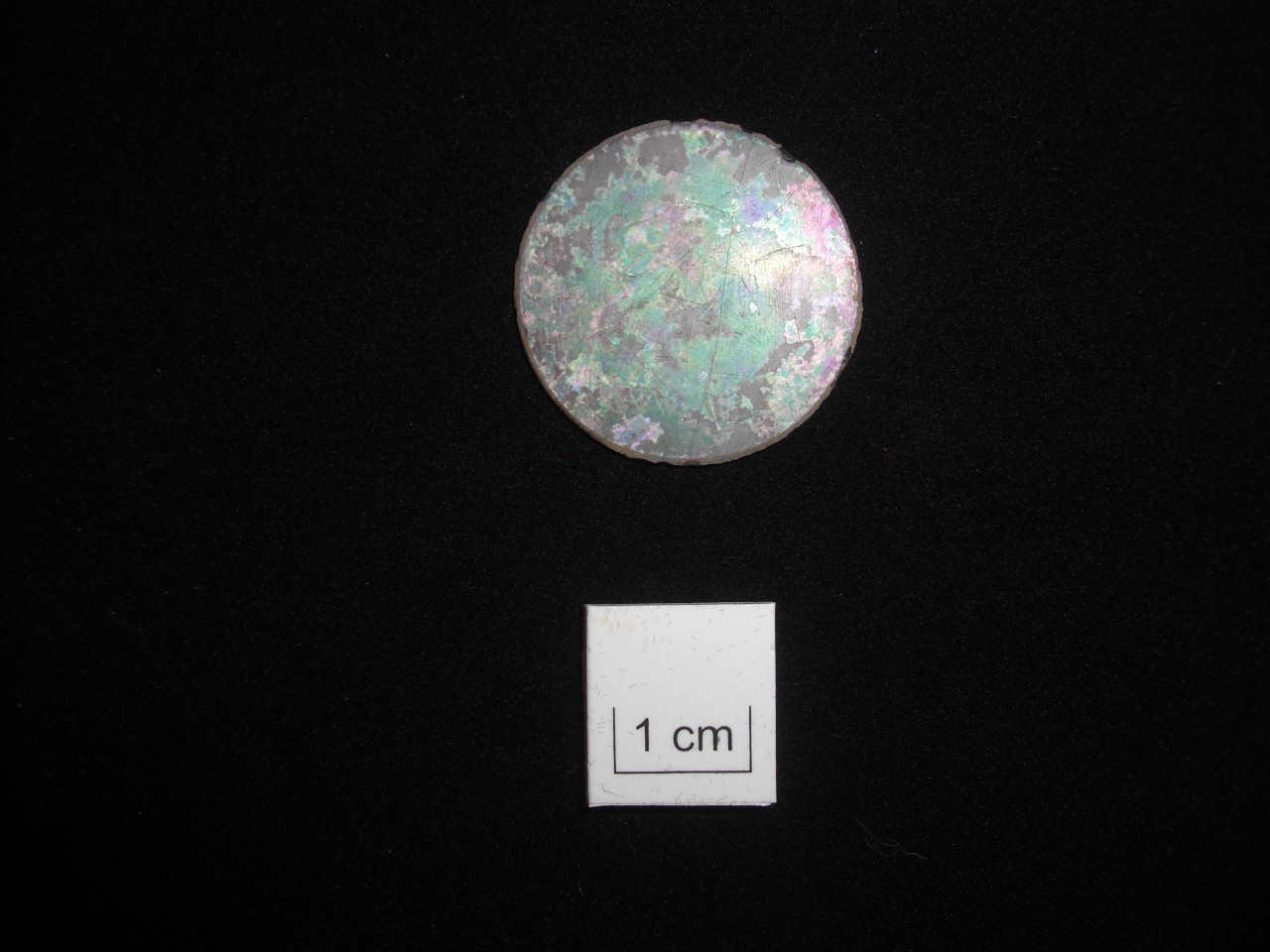
Have you found anything similar during an excavation you were part of? Tell us your thoughts and stories at A63CastleStreet.Hull@highwaysengland.co.uk.
Hairpin
This hairpin has a looped wire head, and is typical of the 19th Century. Plain straight hairpins were usually intended to be invisible, holding the hair up in an updo. Hairpins could be highly decorated and elaborate, with hanging beads and jewels. To create more elaborate hair styles, extra pieces of hair might be required to create the required volume or height. These false pieces were known as ‘rats’ or ‘ratts’ and might be made by the wearer from loose hair they had combed out, or purchasing pieces made from human hair - similar to modern-day extensions!
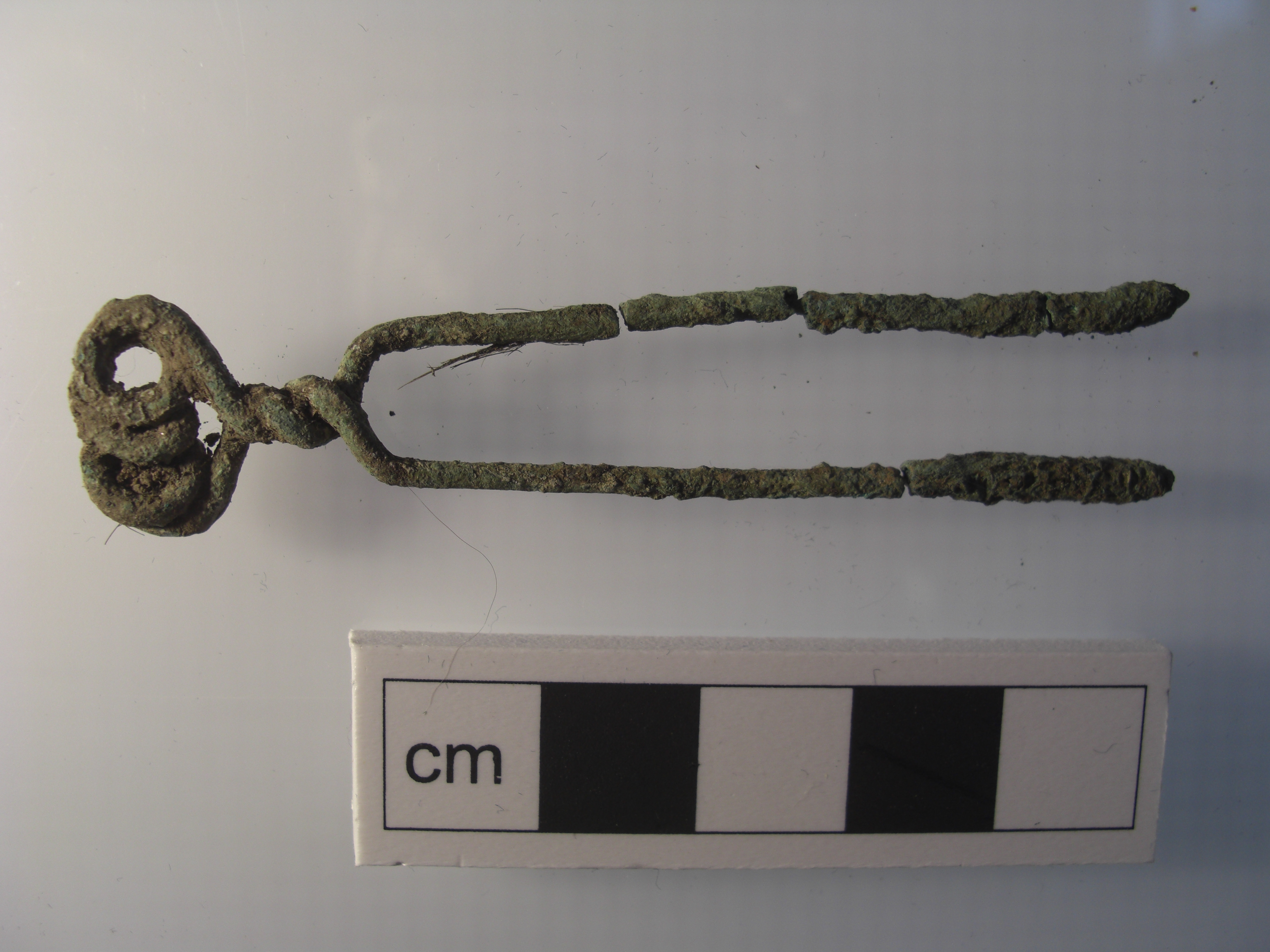
Have you found anything similar during an excavation you were part of? Tell us your thoughts and stories at A63CastleStreet.Hull@highwaysengland.co.uk.
Barbed and tanged arrowhead
Many of our objects have been found deliberately placed with the eighteenth and nineteenth century burials, giving a fascinating and personal insight into the lives of Georgian and Victorian Hullensians. However, we also have some finds which were evidently lost and buried during earlier periods, which were then disturbed when the burial ground came into use.

This barbed and tanged arrowhead is about four thousand years old and dates to the late Neolithic or early Bronze Age, at the time when metal working was introduced to Britain. The central tang would have attached to the end of a wooden arrow shaft, and the two side tangs prevented the arrowhead from being removed after hitting its target.
Have you found anything similar during an excavation you were part of? Tell us your thoughts and stories at A63CastleStreet.Hull@highwaysengland.co.uk.
Small bone knife
A small bone knife with rounded end and a tapered flat-ended handle. This form mirrors 18th Century cutlery knives, with bone handles and steel or silver blades. It could possibly have been a child’s or a mustard knife & may possibly have been ‘prisoner of war work’.
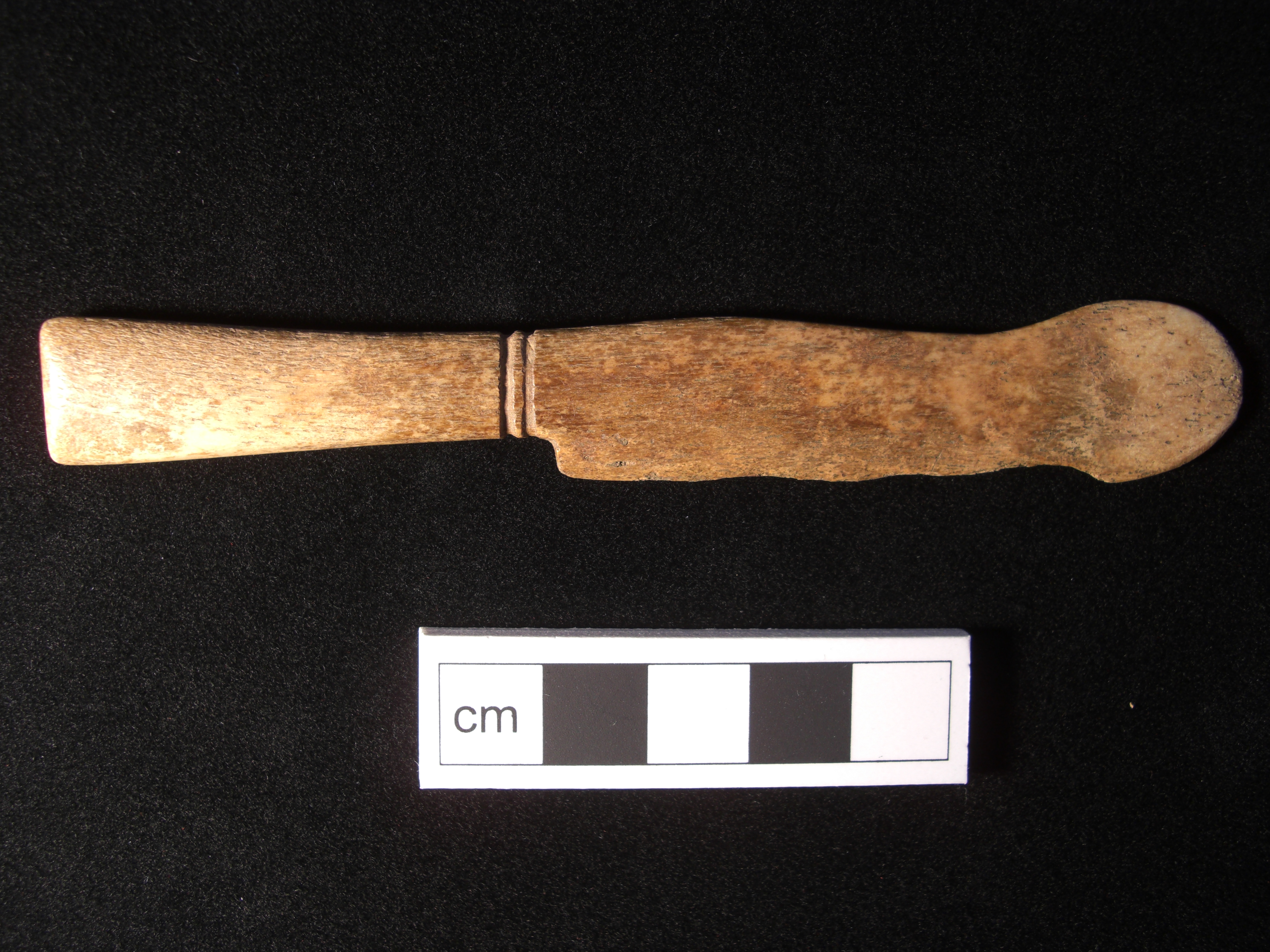
Have you found anything similar during an excavation you were part of? Tell us your thoughts and stories at A63CastleStreet.Hull@highwaysengland.co.uk.
Glass bottle
A tall cylindrical phial made of very pale green glass. A pontil scar on the base indicates it was free-blown, inflating the glass using a blowpipe and then manipulated using tools. It dates from the early nineteenth century and may have been a perfume or medicine bottle. It was found on the right-hand side of a burial by the pelvis.
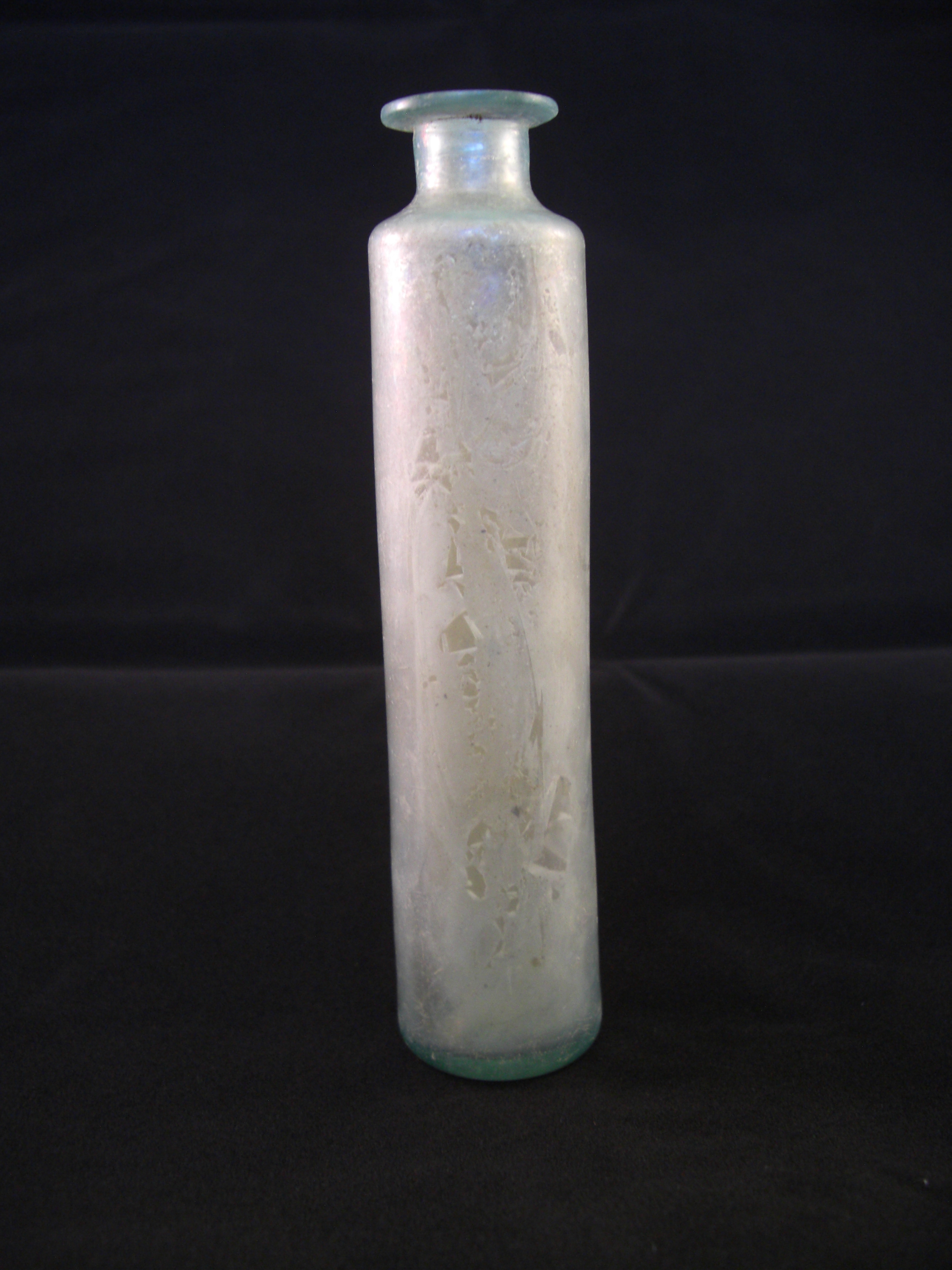
Have you found anything similar during an excavation you were part of? Tell us your thoughts and stories at A63CastleStreet.Hull@highwaysengland.co.uk.
Ceramic marble
Earthenware clay marbles have been in use for hundreds of years and began to be mass manufactured in the nineteenth century. This example is made from a buff-coloured clay, with a swirl of red dye. It has a chip missing and a slightly uneven surface, so it must have been well used!

Interested in archaeology? We’ll be taking people behind the scenes at the labs and talking you through some of their latest archaeological finds in a webinar on Wednesday 14 July at 5pm. Join us by clicking this webinar link a few minutes before it is due to start.
Please watch this video which explains how to set up the webinar session and how it works.
Bone needle case lid
This is the lid of a turned bone needle case with a needle push top, made of iron with punched squares in the manner of a thimble top. The lower half of the case would have attached with a screw thread. It’s likely to date from the late 18th to mid 19th Centuries, and was found by the left shoulder of a burial. This is a fairly plain example but some Georgian and Victorian needle cases were elaborately decorated.
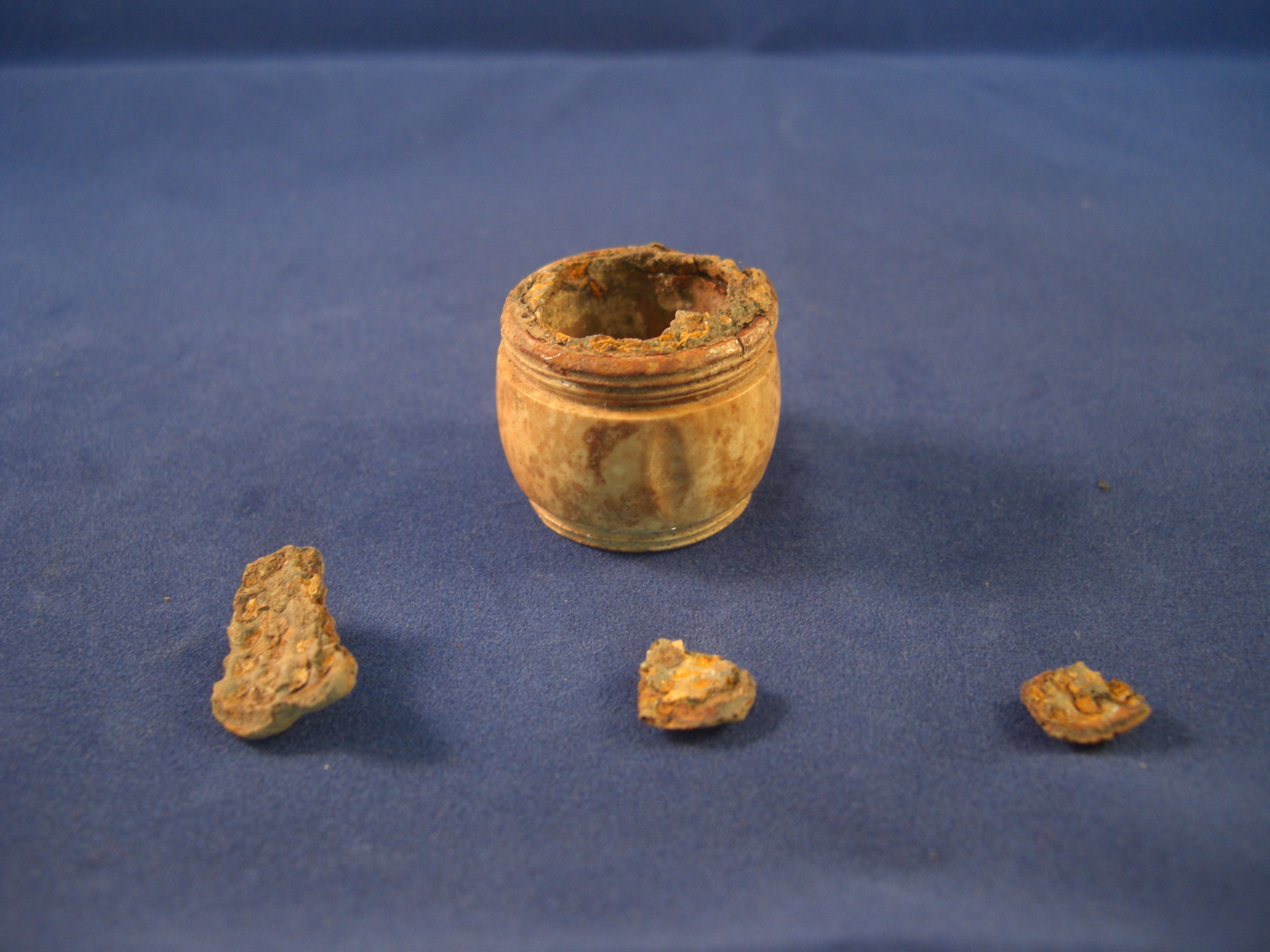
Interested in archaeology? We’ll be taking people behind the scenes at the labs and talking you through some of their latest archaeological finds in a webinar on Wednesday 14 July at 5pm. Join us by logging on to the webinar a few minutes before it is due to start. Please watch our guidance video which explains how to set up the session and how it works.
Lead bale seal
Lead seals displaying information on place of origin, quantity, quality and taxation were attached to bales of trade goods at their source, as a means of identifying what they were and to aid customs decisions.
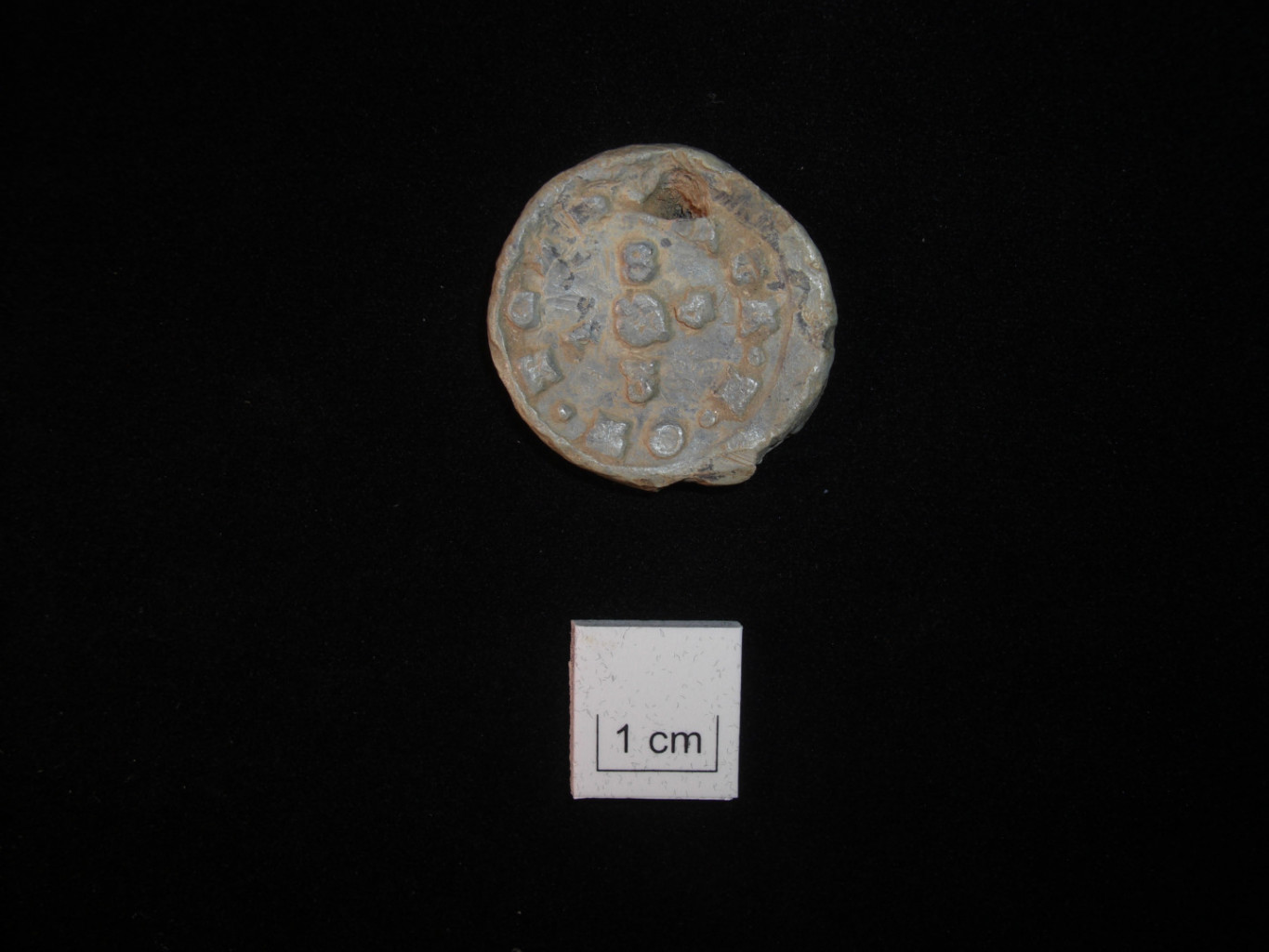
This lead seal would have been affixed to a parcel or bale, and is stamped on one side with the date 1845 arranged around a possible five-pointed star and cyrillic lettering round the edge. Hull was a leading importer of flax and yam for linen cloth, used to make clothes and sail cloths, and of hemp, for rope making, from the Eastern Baltic in the eighteenth and nineteenth centuries.
Have you found anything similar during an excavation you were part of? Tell us your thoughts and stories at A63CastleStreet.Hull@highwaysengland.co.uk.
Lead pipe tamper
This surprising little lead figurine was found when sieving soil.
It is pipe tamper, which was used for packing tobacco into the bowl of a clay smoking pipe, and putting out and breaking up the ash when extinguishing a pipe. This bawdy representation possibly dates from the latter half of the 18th Century, and is very typical of the period. Smoking was just as popular amongst women as it was men, and given the subject of this pipe tamper, it’s plausibly a lady’s smoking accessory.
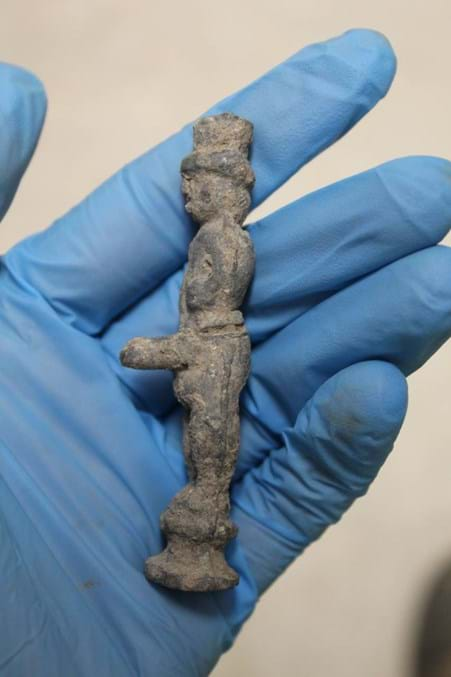
This funny little artefact is very interesting. Have you found anything similar during an excavation you were part of? Tell us your stories at A63CastleStreet.Hull@highwaysengland.co.uk.
Gold Guinea
Even for field archaeologists digging day in day out, striking gold is an extremely rare occurrence!
Here we have a gold third guinea, issued in 1804 during the reign of George III. It was found in loose soil and not associated with a burial.
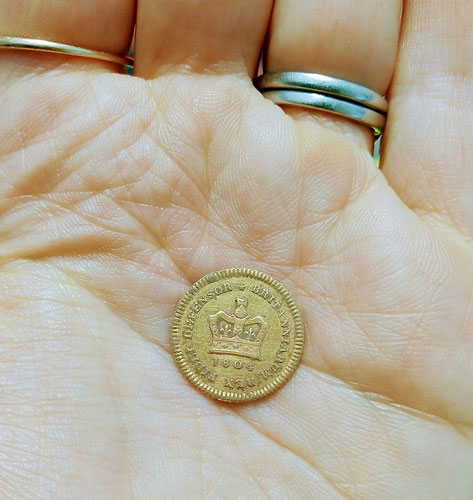
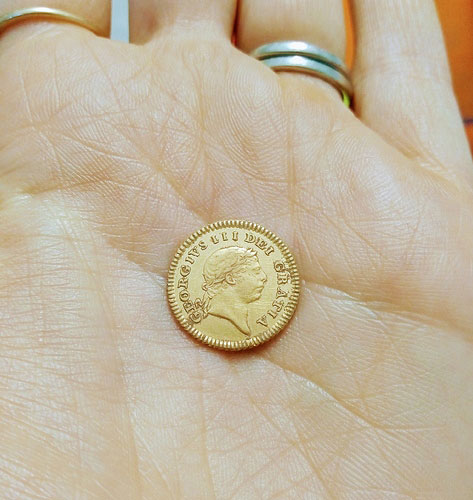
The Latin legend on the front of the coin reads ‘George III by the grace of God’ and the back of the coin reads ‘King of the Britons, Defender of the Faith’. As the name suggests, it was worth a third of a guinea but was known as a seven shilling piece. This coin was produced exclusively during the reign of George III between 1797 and 1813. It was introduced to address a shortage of gold as a result of the French revolutionary and Napoleonic wars.
Why do you find this artefact interesting? Do you have similar findings from an excavation you were part of or any research you would like to share? Tell us your thoughts and stories at A63CastleStreet.Hull@highwaysengland.co.uk.
Leather shoes
The remains of leather shoes were found in one of the tombs. The burial was sealed beneath sandstone slabs so it seems likely that these were worn by the occupant, rather than being a stray later find. Unlike another shoe we also found at Trinity Burial Ground probably left around the twentieth century. Sadly, the skeleton was very poorly preserved and largely absent, but their shoes give us a precious insight into the life of this individual.
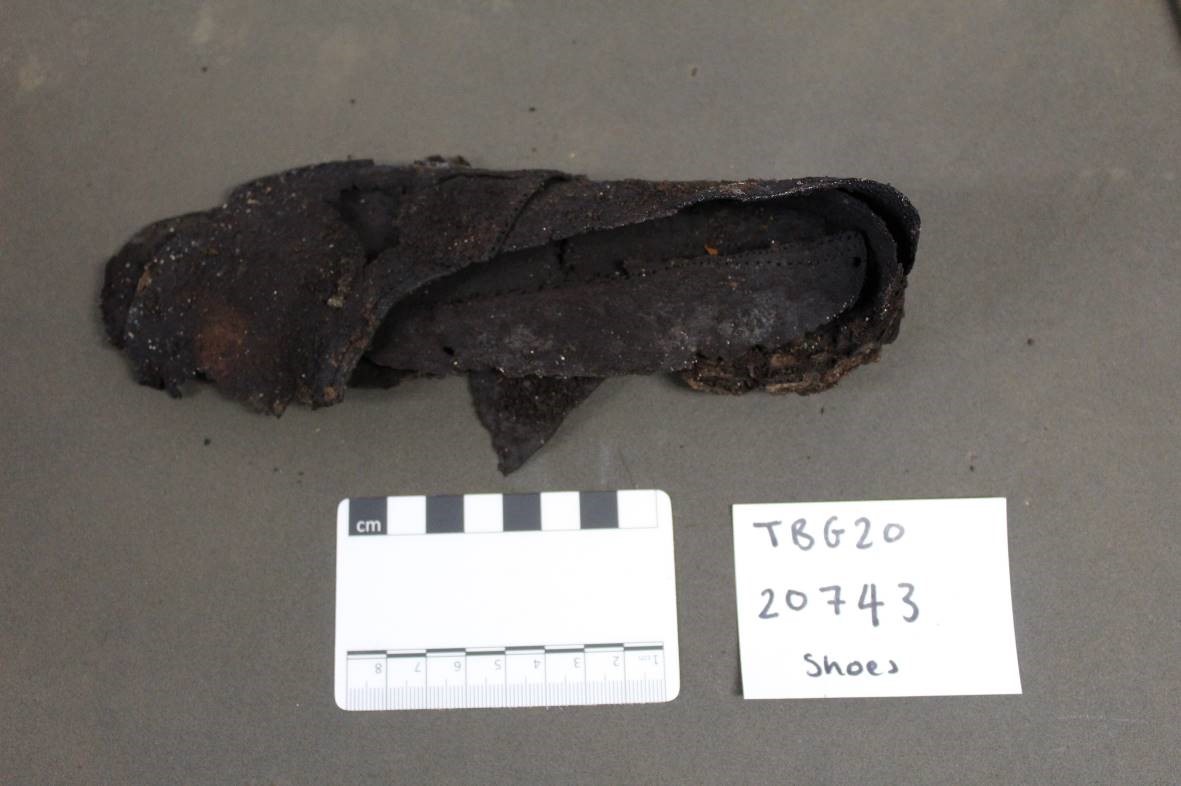
Why do you find this artefact interesting? Do you have similar findings from an excavation you were part of or any research you would like to share? Tell us your thoughts and stories at A63CastleStreet.Hull@highwaysengland.co.uk.
Ivory finial
This object was found during sieving of the soil above the burial layer, so it is not clear whether it was originally associated with one of the graves or has been lost at another point in time. It appears to be made from ivory. It could be one of what would have originally been two matching decorative end pieces, finials, for a personal item such as a purse. Many post-medieval purses had a horizontal metal bar, from which the leather or fabric purse hung from.
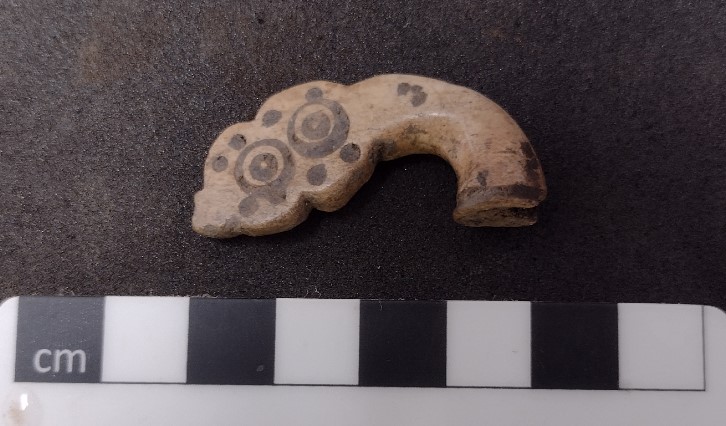
Do we still see items like these in trends today? Maybe you have a similar finding from an excavation you were part of. Share your thoughts and stories with us at A63CastleStreet.Hull@highwaysengland.co.uk.
Sheep bone scoop
Along the northern edge of the excavation area, we have found archaeological deposits which pre-date the graveyard and may be medieval.
This scoop was found very close by and may date from this period. It has been carved from a sheep metacarpal, one of the front upper foot bones. They have little flesh on the outside and only a little marrow on the inside, but are straight, long and strong for carving into items as varied as handles, spoons, needle cases, hair pins and whistles throughout different periods of history.
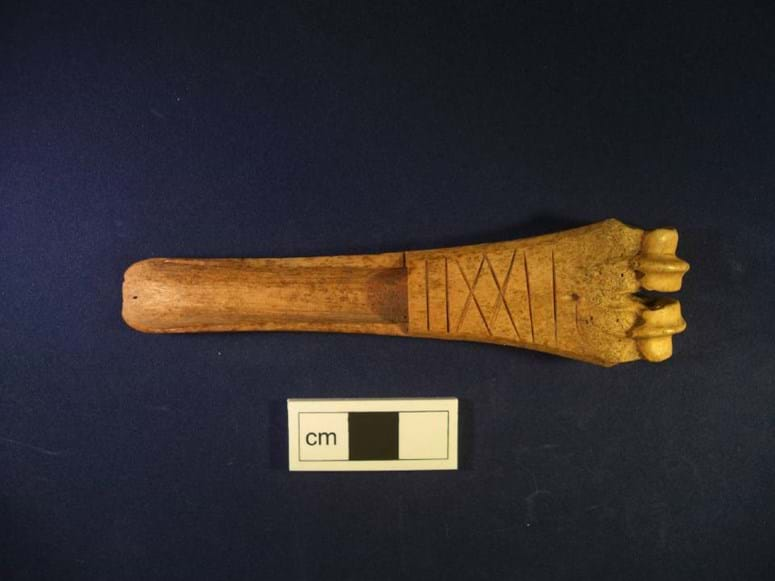
There were probably numerous ways of using this type of object but they are often referred to as ‘apple corers’, used not only to core fruit but scoop out the flesh to eat rather than biting into them. It was considered more polite to eat fruit this way, and was particularly useful when a person was lacking in teeth!
What do you think this artefact was made for? Email us at A63CastleStreet.Hull@highwaysengland.co.uk to share your ideas.
Mother of pearl knife handle
Mother of pearl is a smooth iridescent substance which forms the inner layer of mollusc shells, particularly pearl oysters. Mother of pearl was very fashionable in the nineteenth century and was used to make a wide range of items including buttons, inkwells, fans, snuff boxes, jewellery and this small engraved knife small. It has a line of circles down the centre which is bordered by a fanned shell design.
Mother of pearl was harvested and transported all around the world, and especially western Australia during the Victorian period.
The handle is most likely to have been attached to a button hook, for fastening gloves or boots closed with small buttons or a sewing tool. These often were bought in sets containing both tools. An alternative use may have been as the handle of a small pickle fork.
Do you have any memories or photos of tools made from Mother of pearl you want to share? Maybe you have similar family heirlooms or conducted in depth research in to Mother of pearl artefacts from this period. Email us at A63CastleStreet.Hull@highwaysengland.co.uk to share your stories with Highways England.
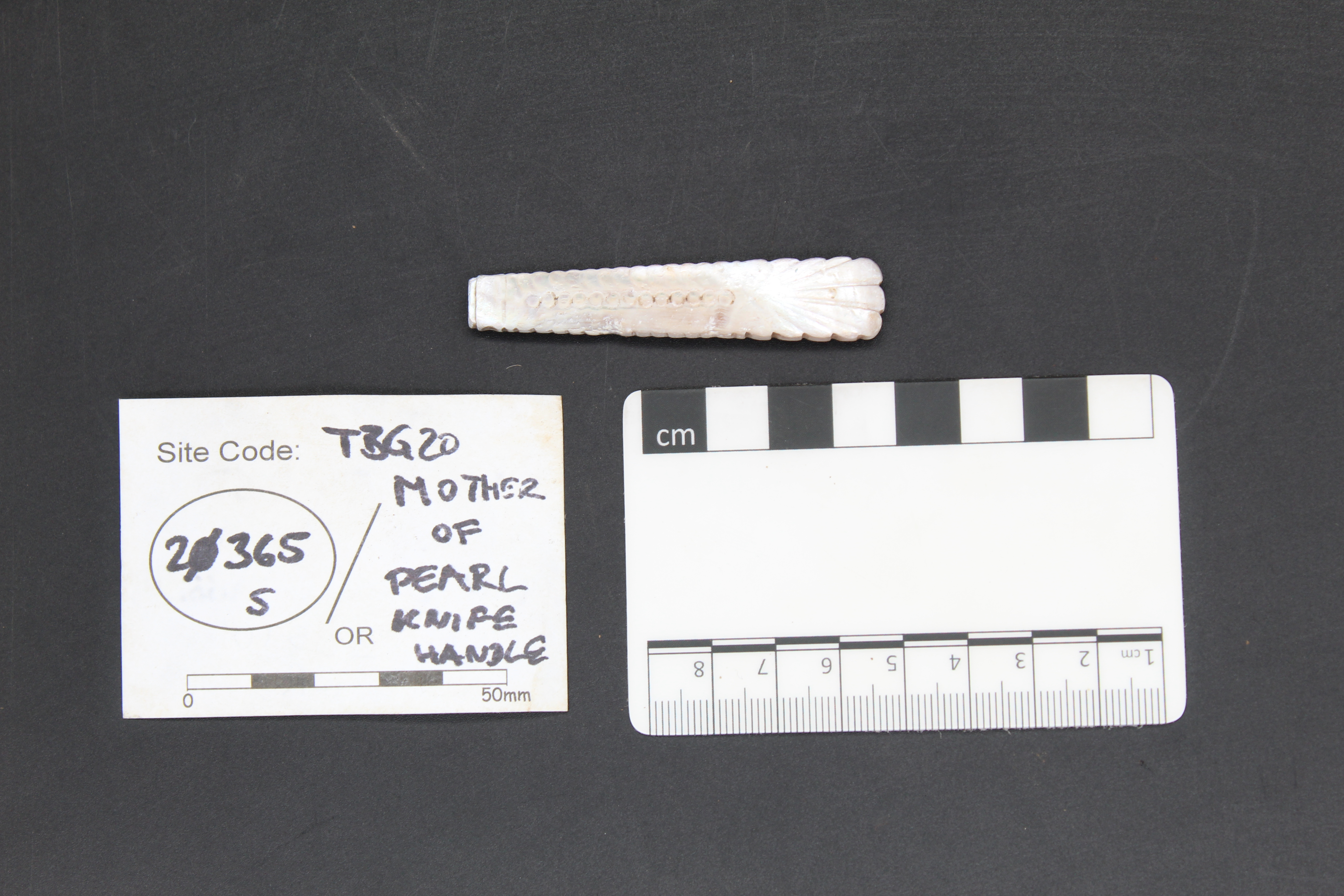 . . .
. . . 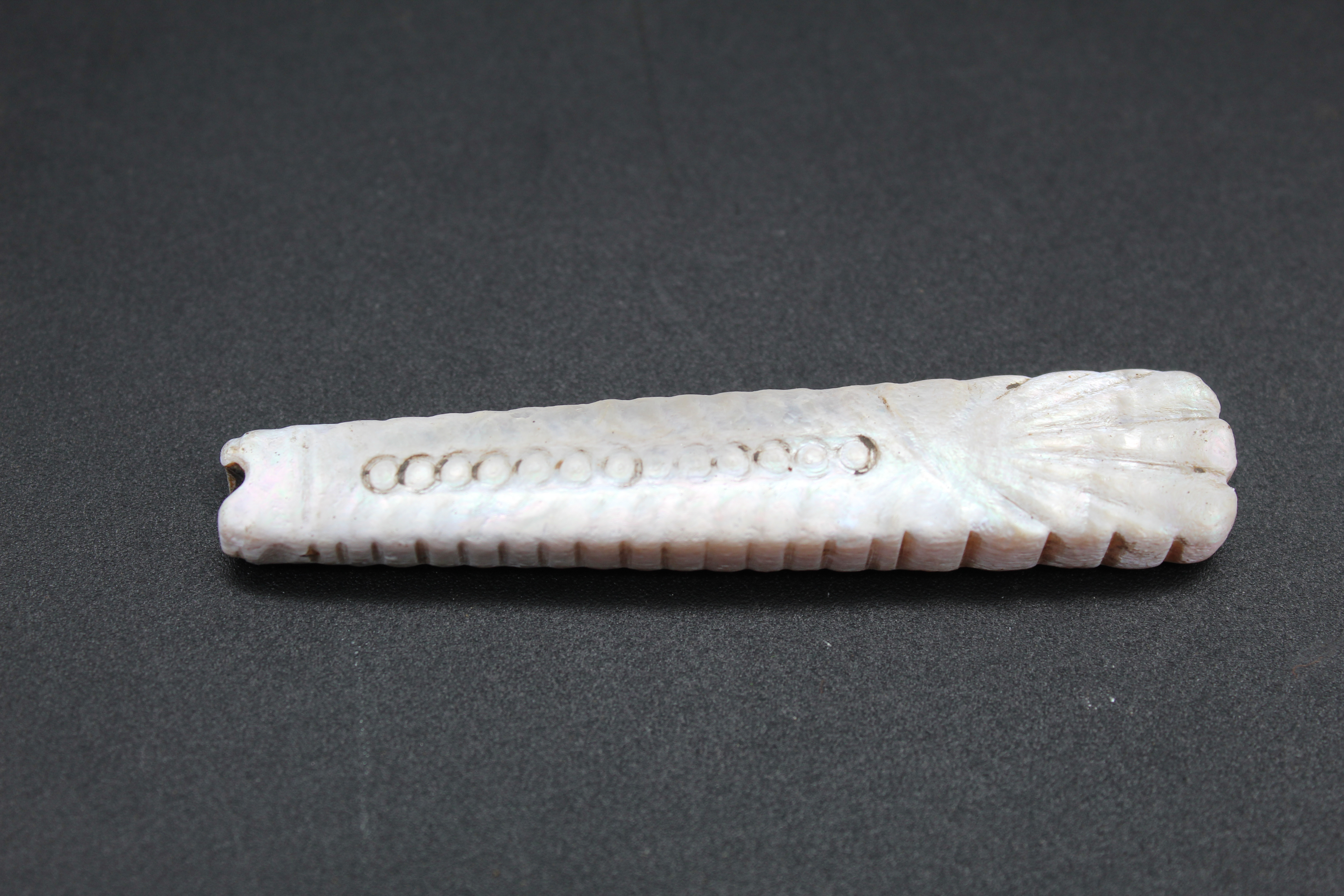
Beardman or bellarmine jug sherd
This is a sherd, or fragment, of a salt-glazed stoneware pottery vessel with a glossy textured surface formed by throwing salt into the kiln during the firing process.
This sherd is decorated with an open-mouthed bearded face, typical of bellarmine jugs manufactured in the 16th and 17th centuries, which was usually on the neck of the vessel. The jugs were usually used for storing and serving beer and wine. The bearded faces are thought to represent the ‘wild man’ found in European folklore of the time.
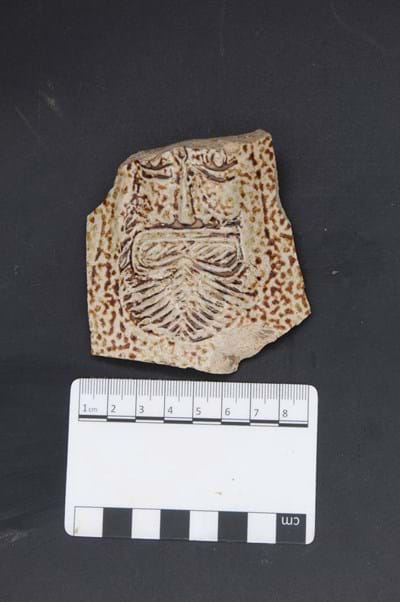
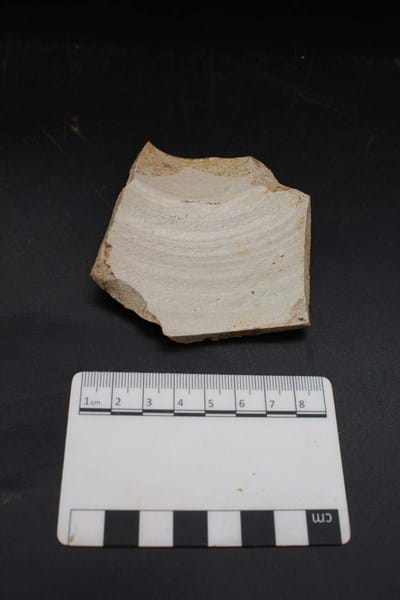
Shroud pin
We’ve found bronze pins in many of the graves. These would have been used to fasten shrouds or clothing. During the late eighteenth and early nineteenth centuries, pins were made by hand by drawing brass wire to reduce the diameter, cutting to the desired length, and grinding both ends to sharpen. The pin heads were created by winding a short length of thinner wire and clamping it to one end. After manufacture, brass pins were usually tinned to create a more attractive and smoother surface finish.
The first pin-making machines were introduced in about 1830, and for the first time the pins were made in one piece with dies shaping one end of the shank into the head.
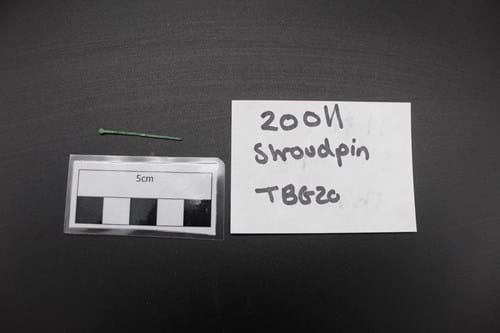
Whale bone
Whaling was a prosperous industry in Hull in the early 19th century.
Whaling voyages from Hull produced nearly 5,000 tonnes of oil a year, which was used to light lamps and make soap.
Whale baleen, the mouth bristles used to filter plankton, was in high demand for its strength and flexibility. It was used to produce corset stays, crinoline petticoats, umbrella ribs, fishing rods and riding crops. Larger bones were used as gateposts and arches, or ground into fertiliser.
We’ve found several fragments of whale bone at Trinity Burial Ground as well as this polished whalebone tool, although we’re not sure of its purpose.
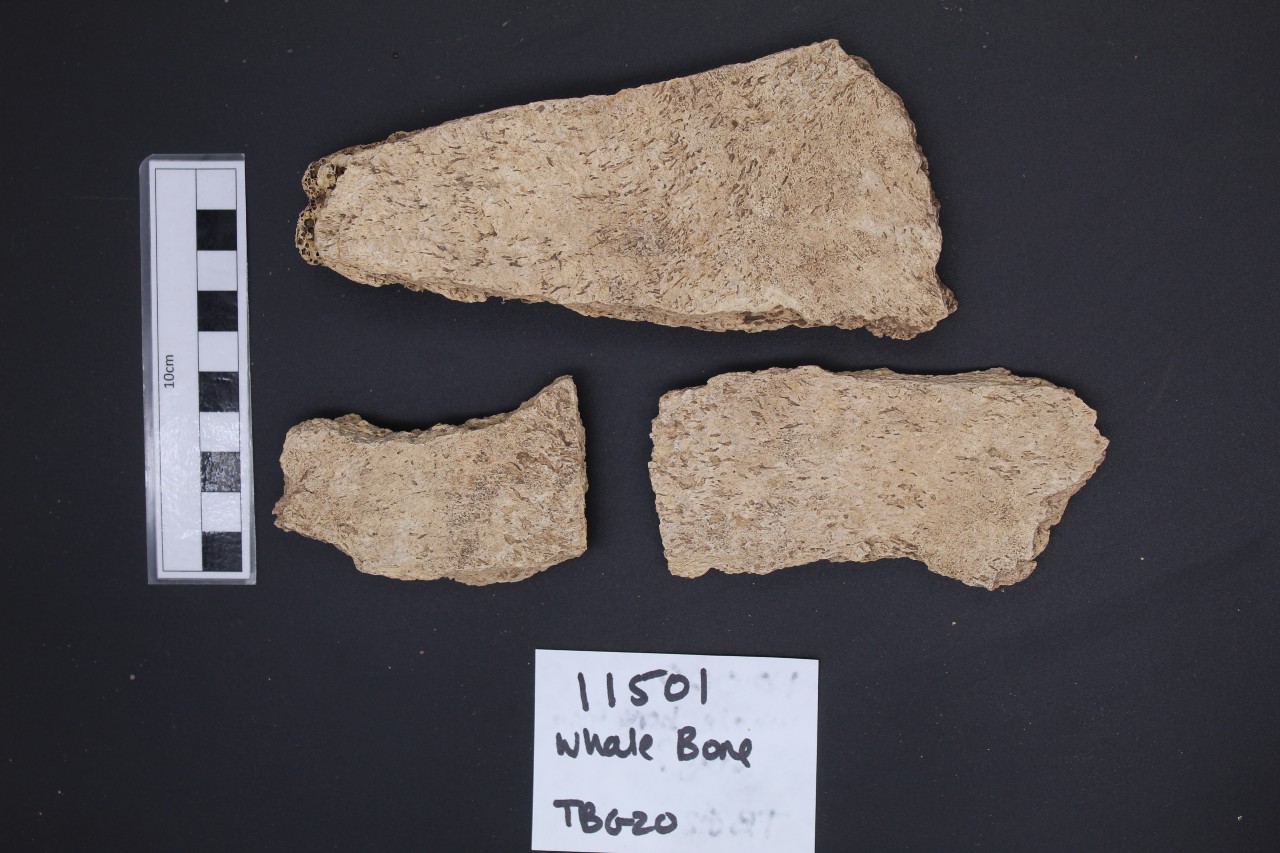
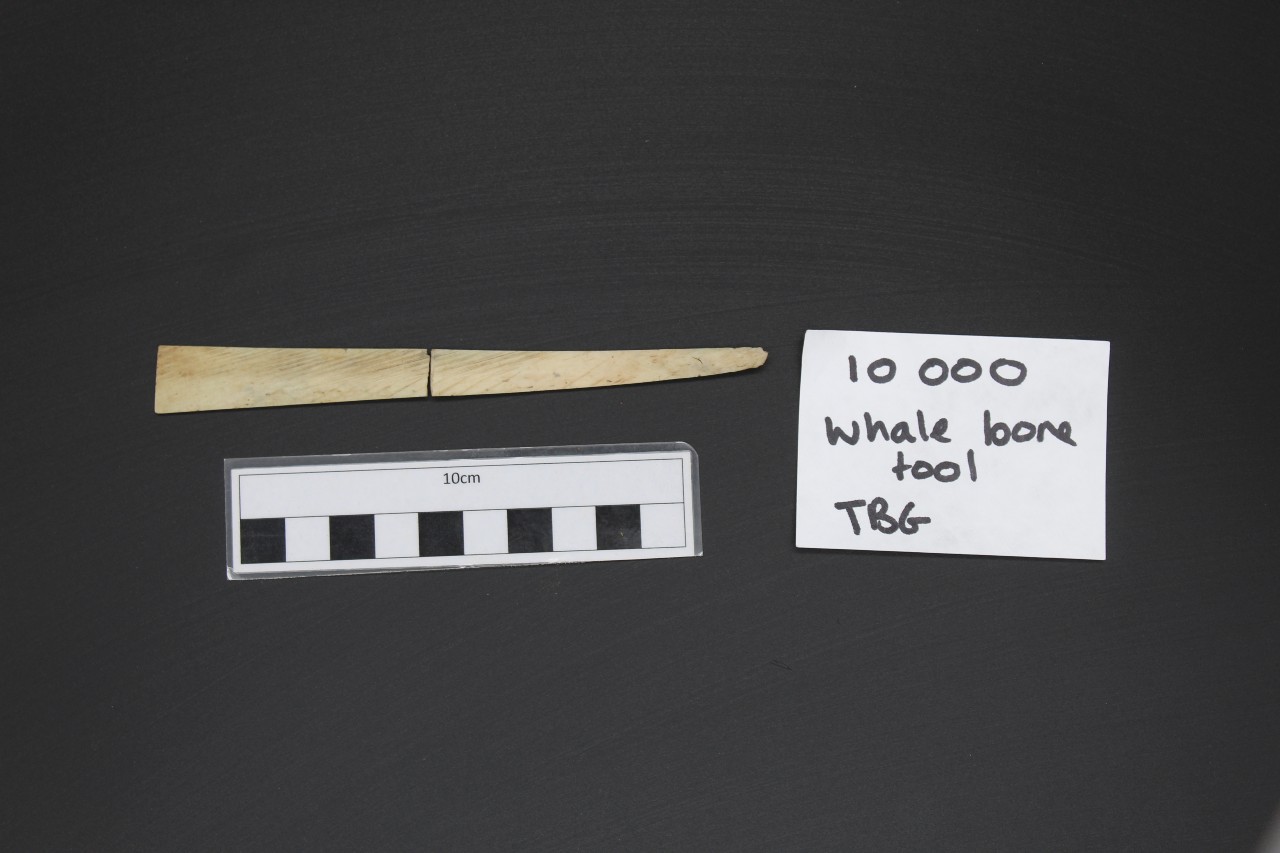
Napoleon III coin
This bronze five centimes coin was issued by the French Second Empire in 1855. The front or obverse features the portrait of Napoleon III, facing left, and the reverse shows an eagle.
This pattern with Napoleon appears on bronze French coins from 1852 to 1865. The letter ‘B’ also appears on the reverse and indicates that this coin was minted in Dieppe. At the time this coin was produced, Britain was allied with France against Russia during the Crimean War (1853 - 1856).
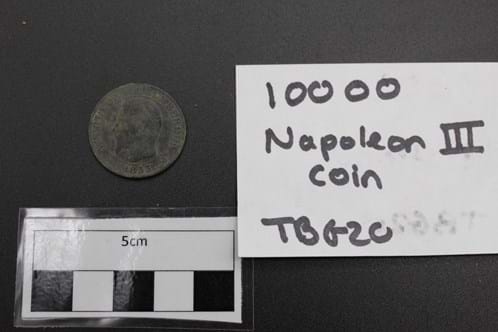
Shell hair comb
This comb was found in-situ underneath the skull of a skeleton. The comb looks to be made of ‘tortoise’ shell, which was more usually sea turtle shell. Horn was cheaper and was often used to achieve a similar mottled effect, and poorer women would have used wooden combs to hold their hair in place.
Our finds team report it was hard to clean because it’s so fragile, and mud had to be carefully cleaned out from between the teeth.
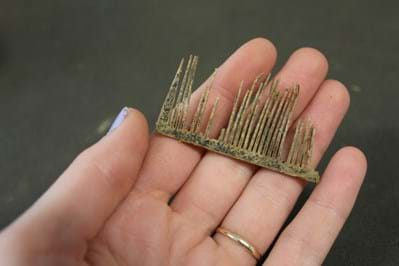
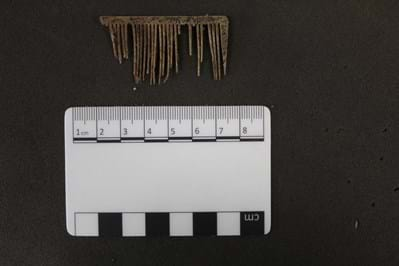
A sight of beauty
A conch is a sea snail and their spiral-shaped shells have long been prized for their beauty and use as a wind instrument.
Conchology, the study of mollusc shells, was very popular in the 19th century among natural history enthusiasts and merchants imported shells to meet the growing demand.
At the moment, we’re not sure where this shell has come from but it is not native to the UK. We wonder whether someone brought it to Hull from their travels as a present or souvenir.
Do you have one at home? Does it have a special significance to you?
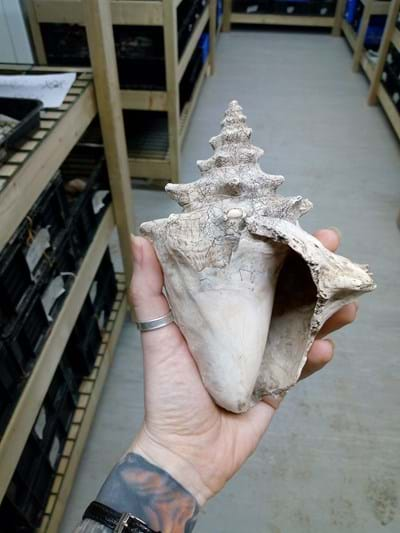
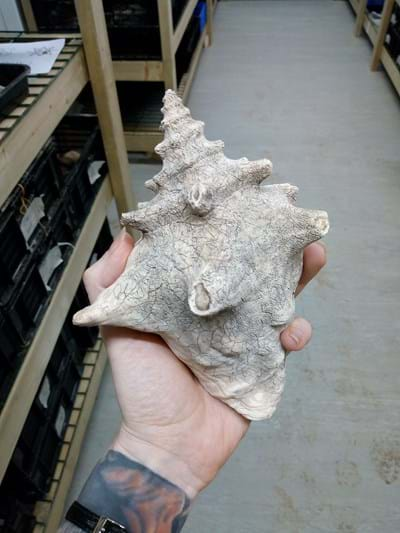
Hair comb found
This hair comb was found by the head of a woman, indicating she was buried with it holding up her hair.
Victorian women usually start wearing their hair up after marrying. Initially, the comb was thought to have been made from tortoiseshell, but we now think it may be made from sheep’s horn which was commonly used for many purposes as a hard malleable material before plastic replaced it.
The horn would have been soaked, flattened out, cut to shape and the comb teeth sawn. This woman’s burial was found at the eastern end of the burial ground, where we appear to have the graves of the more well-off middle classes.
The working class women seem to be buried at the western end and were likely to have worn wooden combs in their hair, which haven’t survived in the ground.
Do you recall any family members wearing their hair up with combs like these? Do you have any photos of Victorian relatives showing how hair was styled in the 19th century?
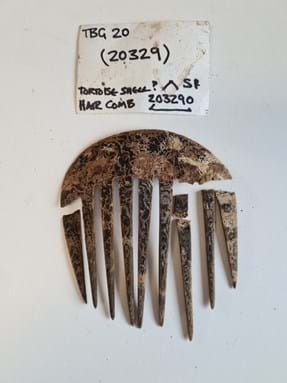
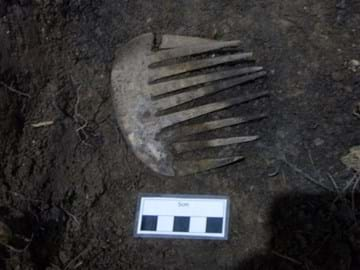
Plates found in burials
These plates are typical of the everyday tableware people would have used in their homes in the 19th century. However, these examples were found alongside burials at Trinity Burial Ground. They would have held salt, commonly believed to offer protection from the devil. The plates would usually have been removed after the funeral service so it is unusual to find them in the ground. At Trinity Burial Ground we have found four with different designs.
These are two close ups of the plates, one has a floral motif and the second is a willow pattern plate.
Do you recognise the patterns on these plates? Do you have any examples of similar tableware at home?
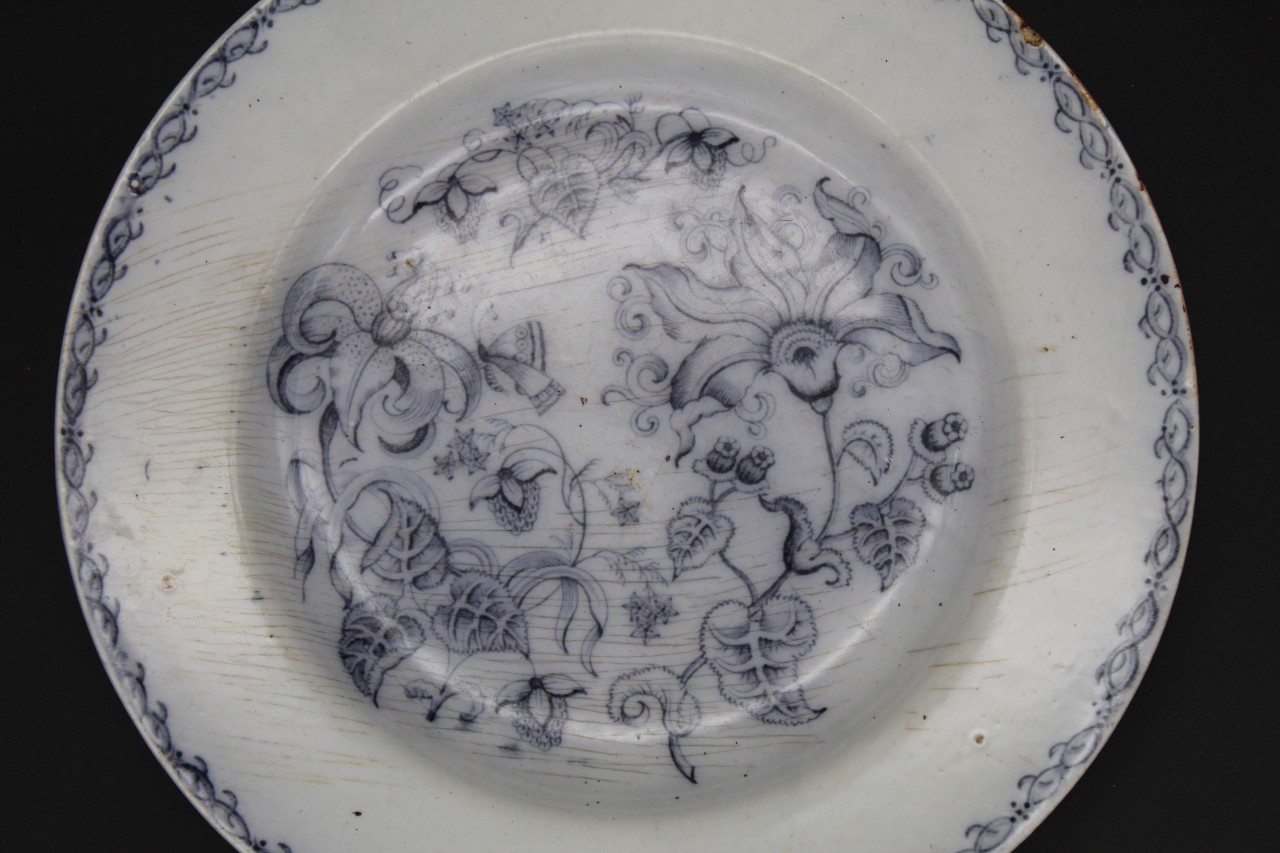
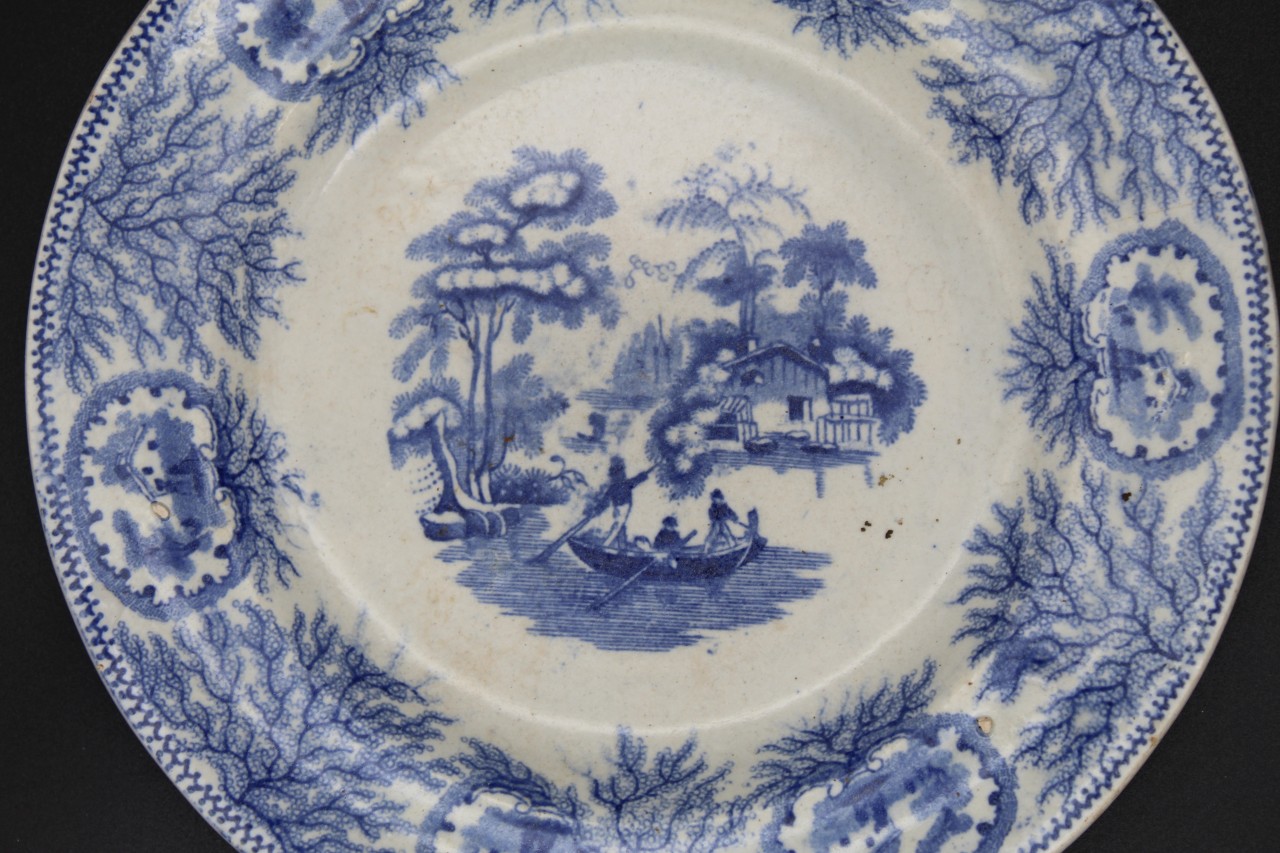
Do you remember shoes like this?
This shoe was found by one of the tombs. It has a well worn sole and there would have been a heel - there are nail holes where it would have been.
There has been some debate about how old this shoe is as we’re fairly confident it isn’t contemporary with the Victorian burial ground. We suspect it is 20th Century because the sole looks to be rubber - perhaps dating to the 1950s/60s.
Can anyone help us with dating this shoe? Do you recall shoes like this?
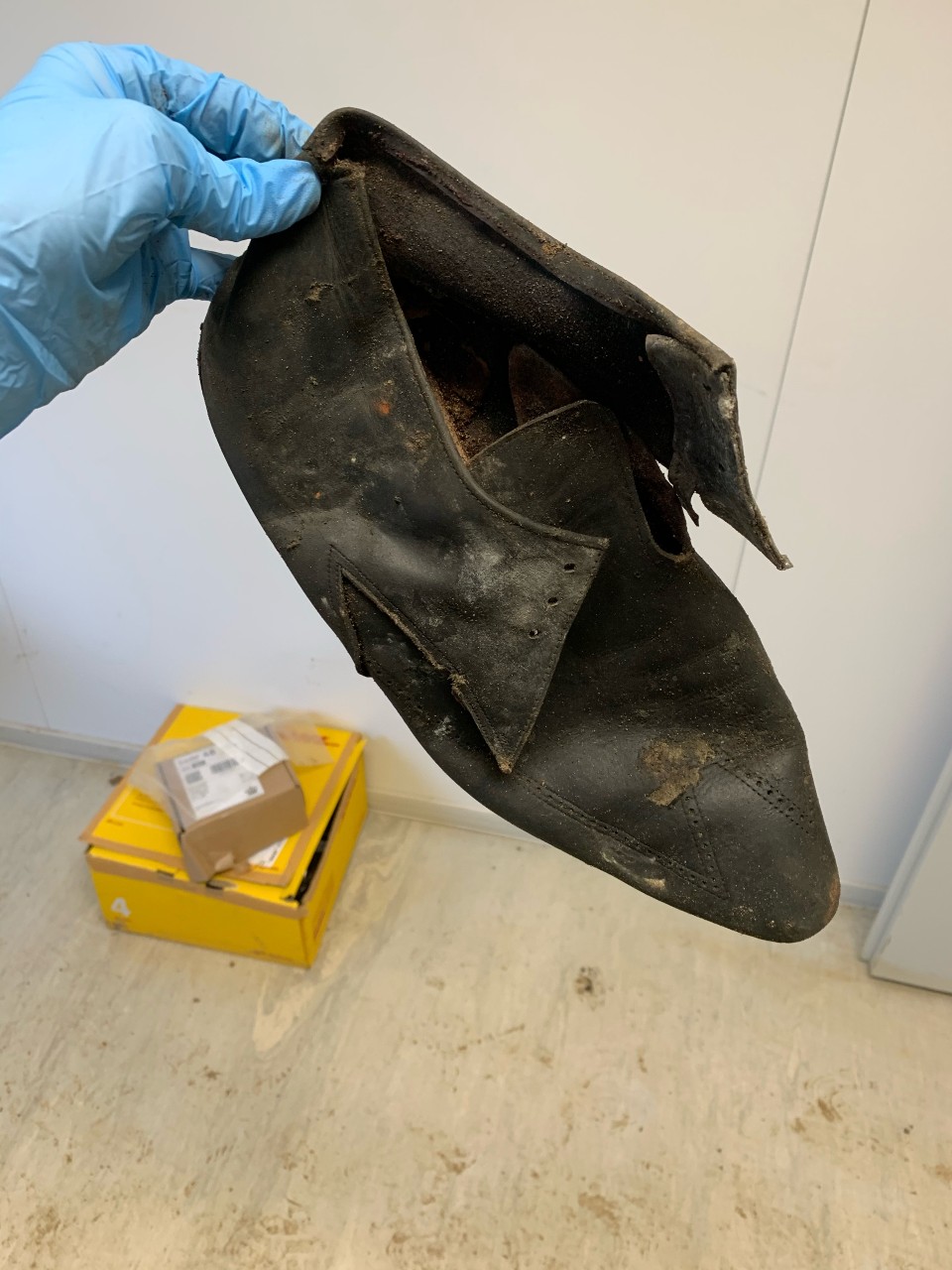
Sealed bottle
A sealed bottle has been found containing a brown liquid. The bottle is glass, and says ‘Hull Infirmary’ on the side. It looks to have been deliberately buried within a grave. We’re looking into whether the contents can be tested to find out what it is.
Have you come across chemist paraphernalia dispensed by Hull Infirmary? Perhaps you’ve uncovered a glass bottle like this from your garden or you’ve spotted an earthenware ointment jars on a shelf of antiques?
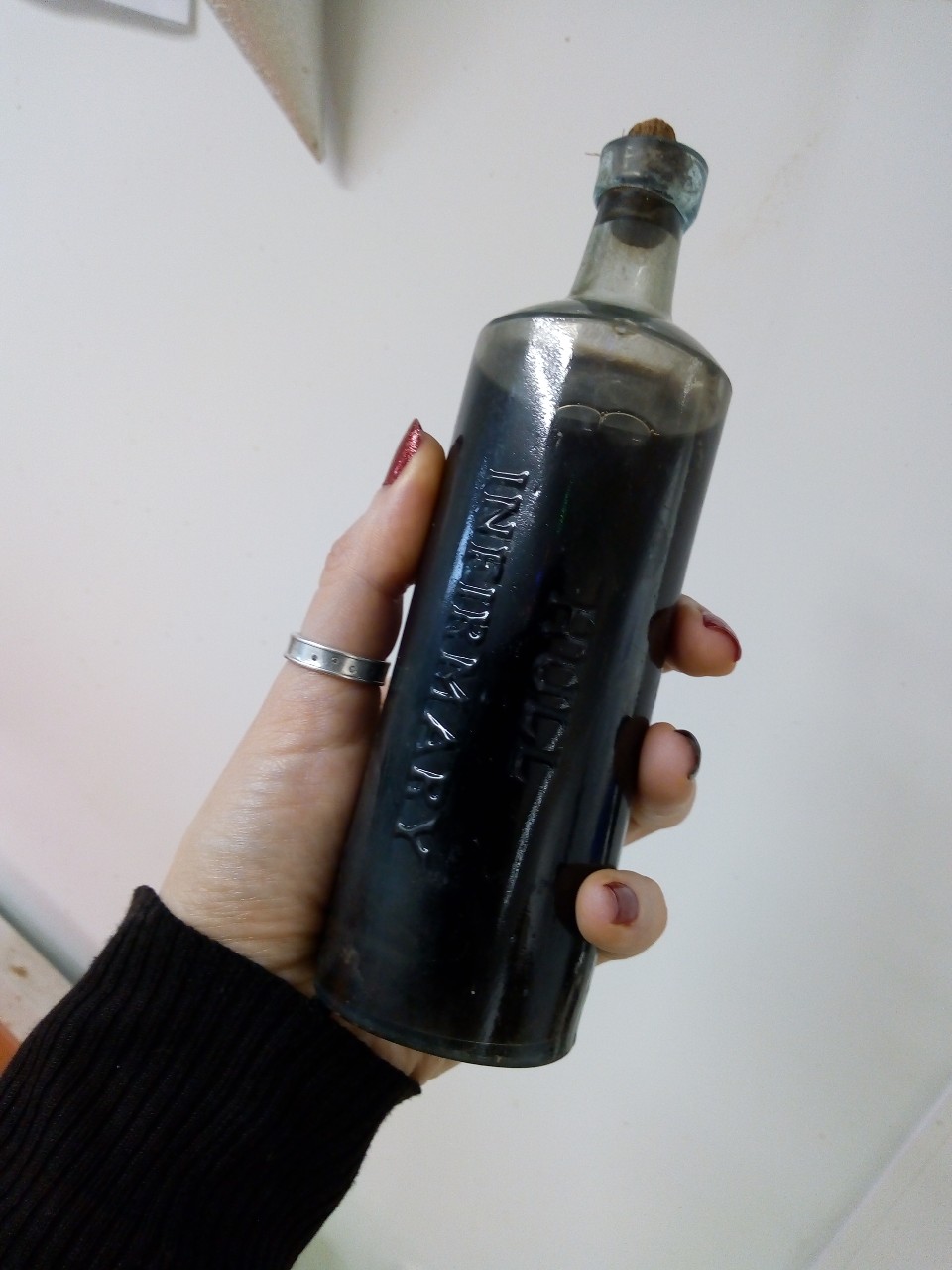
Jewellery and coins found
We’ve found a pair of coins, issued in the Netherlands, from a burial. They were found where a trouser pocket might once have been.
Do you have Dutch connections and live in Hull today? Can you tell us anything more about Willelm I?
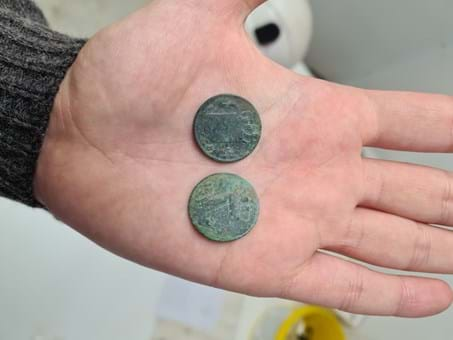
This collection of small purple beads were found with one of the graves. And we found this gold wedding band with hallmarks. Do you recognise the hallmarks?
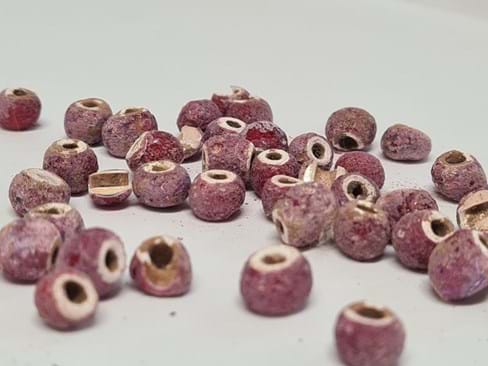
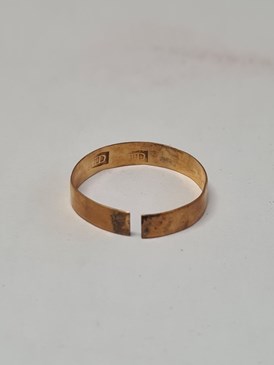
This copper-alloy chain-linked cufflink has been found. It has a design still slightly visible which was worn by navy officers.
Do you or anyone else you know have cufflinks with naval associations?
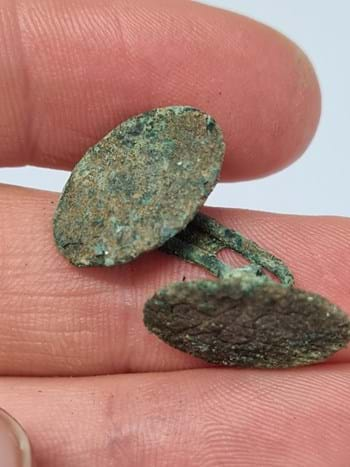
Studded coffin plate
A preserved coffin inscription, with the name and age of the buried individual picked out on the surface of the coffin lid in copper studs.
It recorded 79-year-old Jane Griswood (died 2 November 1834). The use of studwork for recording the biographical information (rather than condensed information, such as initials) seems both unusual and a little outdated for the time of burial, as was the use of ‘obt’ rather than ‘died’ as seen more commonly on the painted coffin plates.
We’ve been able to match the data to a burial register record, where the surname is actually spelled incorrectly as Griswold rather than Griswood!
Is your surname Griswood? And are your family from Hull? If so, let us know if you think you may be a relation of Jane Griswood.
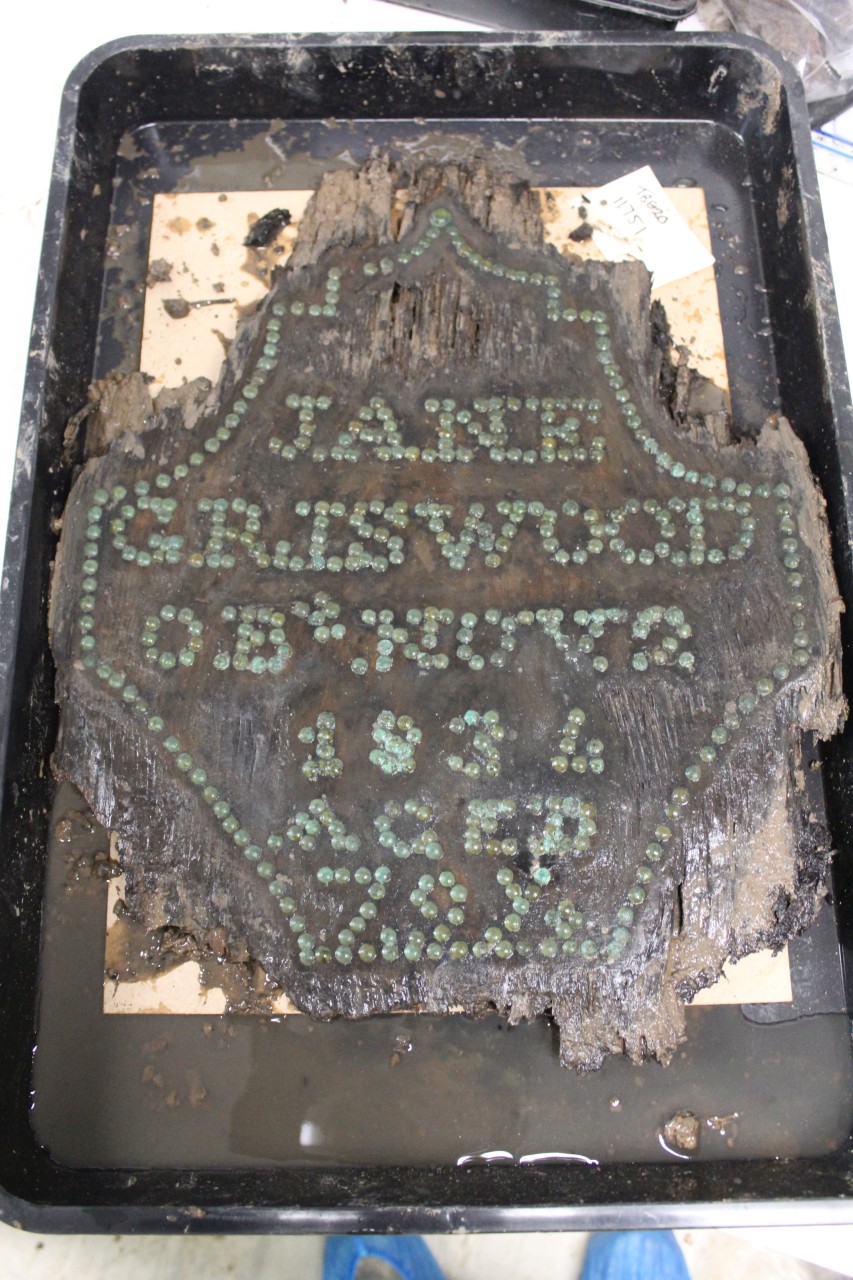
Floral tribute
We found this collection of plant remains preserved on top of a coffin from one of the tombs excavated this week. The floral tribute was laid on top of the coffin plate. The consensus is that it is a variety of bilberry, probably cowberry (or lingonberry).
Have you spotted any growing locally in Hull?
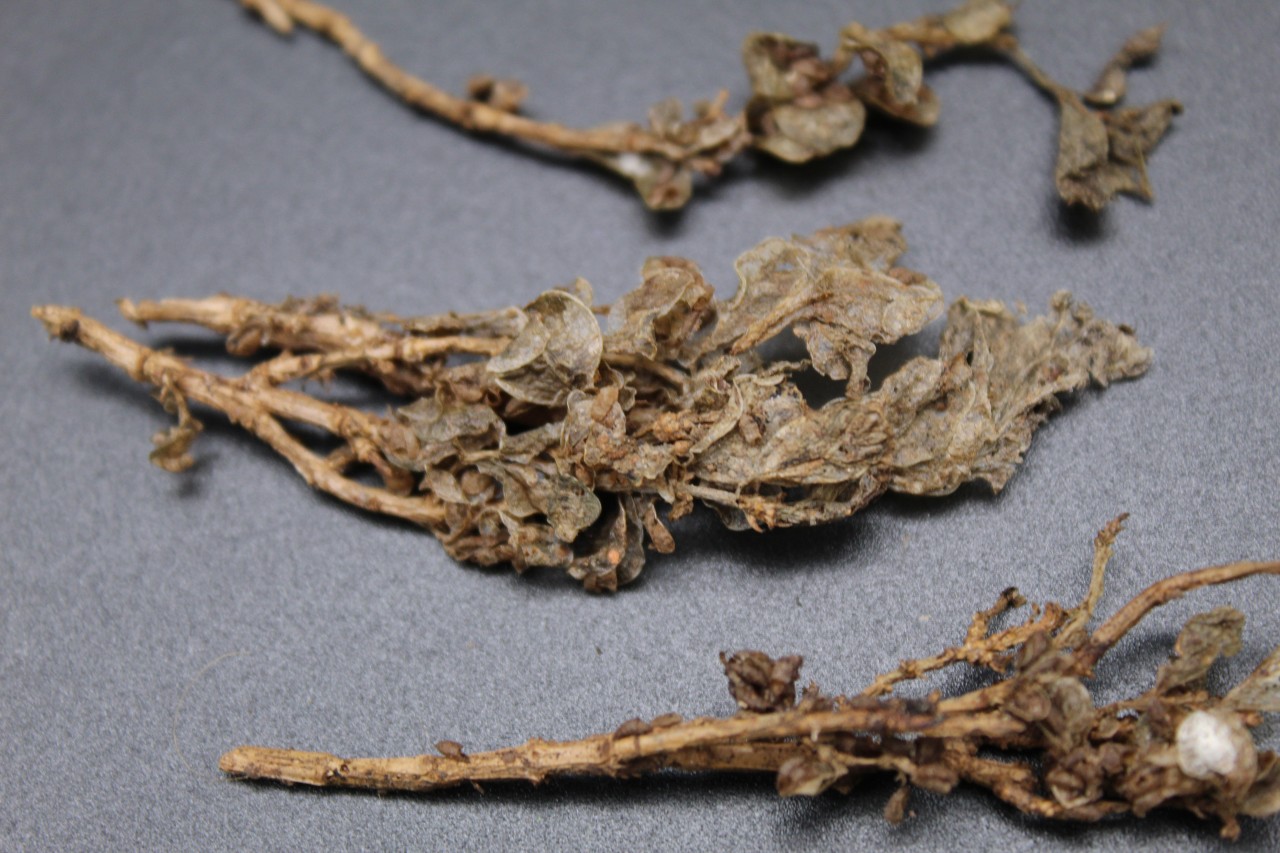
Brick-lined grave built in the shape of a coffin
We have excavated our first shaft grave, which was brick-lined and capped by stone. The coffin plate had largely disintegrated but the coffin grips, each with a plate depicting cherubs, were well preserved.
This is an ornate grip plate from the brick-lined grave. The design includes two winged cherubs a cartouche and foliage.
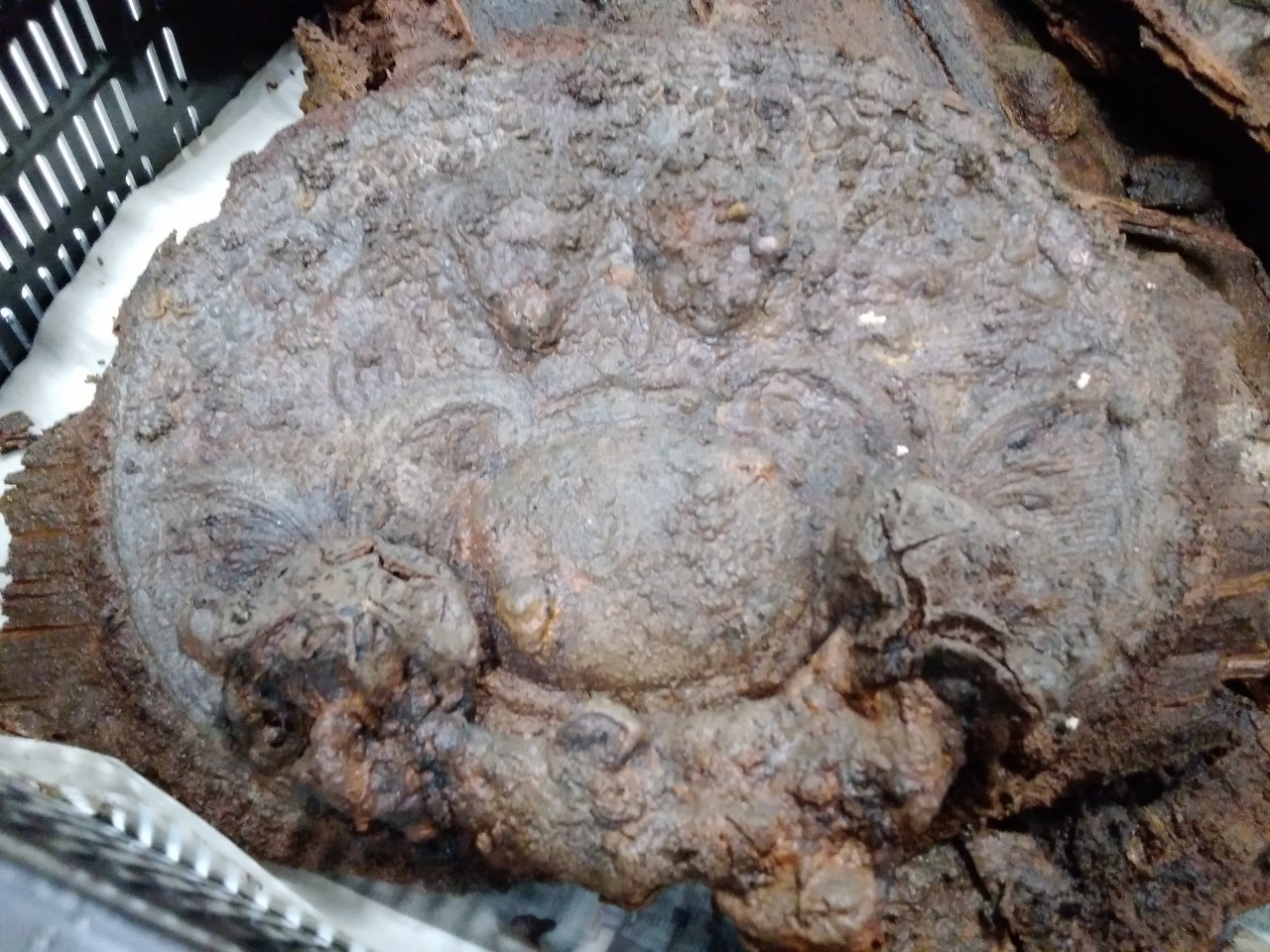
Have you spotted images of cherubs like this in and around Hull? On grave stones, building façades, church carvings? If you have, share your photos with us. Tell us where you took them and we’ll share them next week.
Brooch
This floral brooch was found within a grave, and has been expertly cleaned in our finds department. It doesn’t appear to have a pin or hinge, but it could have been attached to clothing by a ribbon. The central stone is probably agate polished into a cabochon.
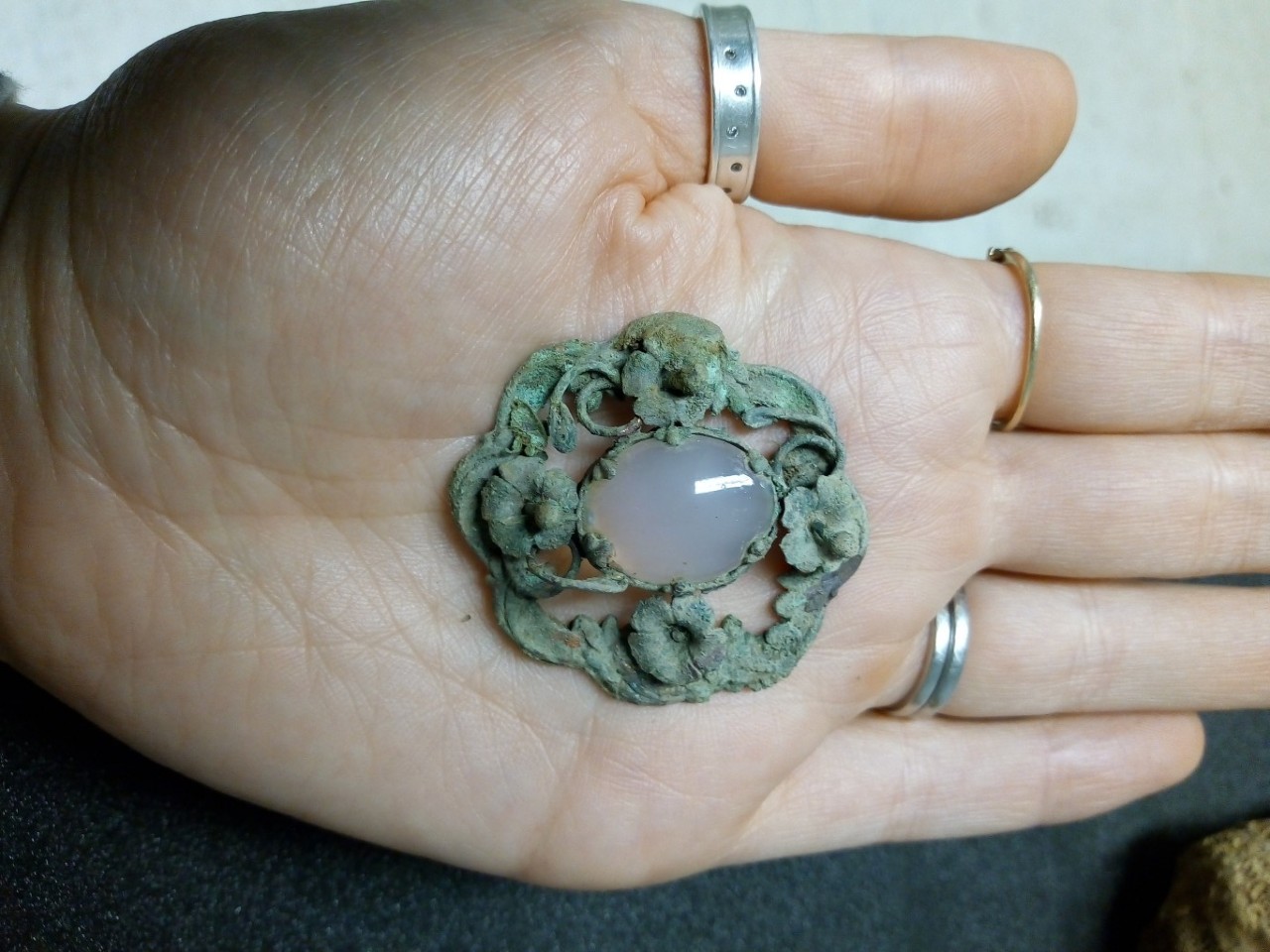
Clay pipe
This clay pipe features running footballers. It was common for pipe makers in the latter half of the nineteenth century to including sporting motifs, coinciding with the rise of amateur and professional sports. Football and cricket were commonly featured.
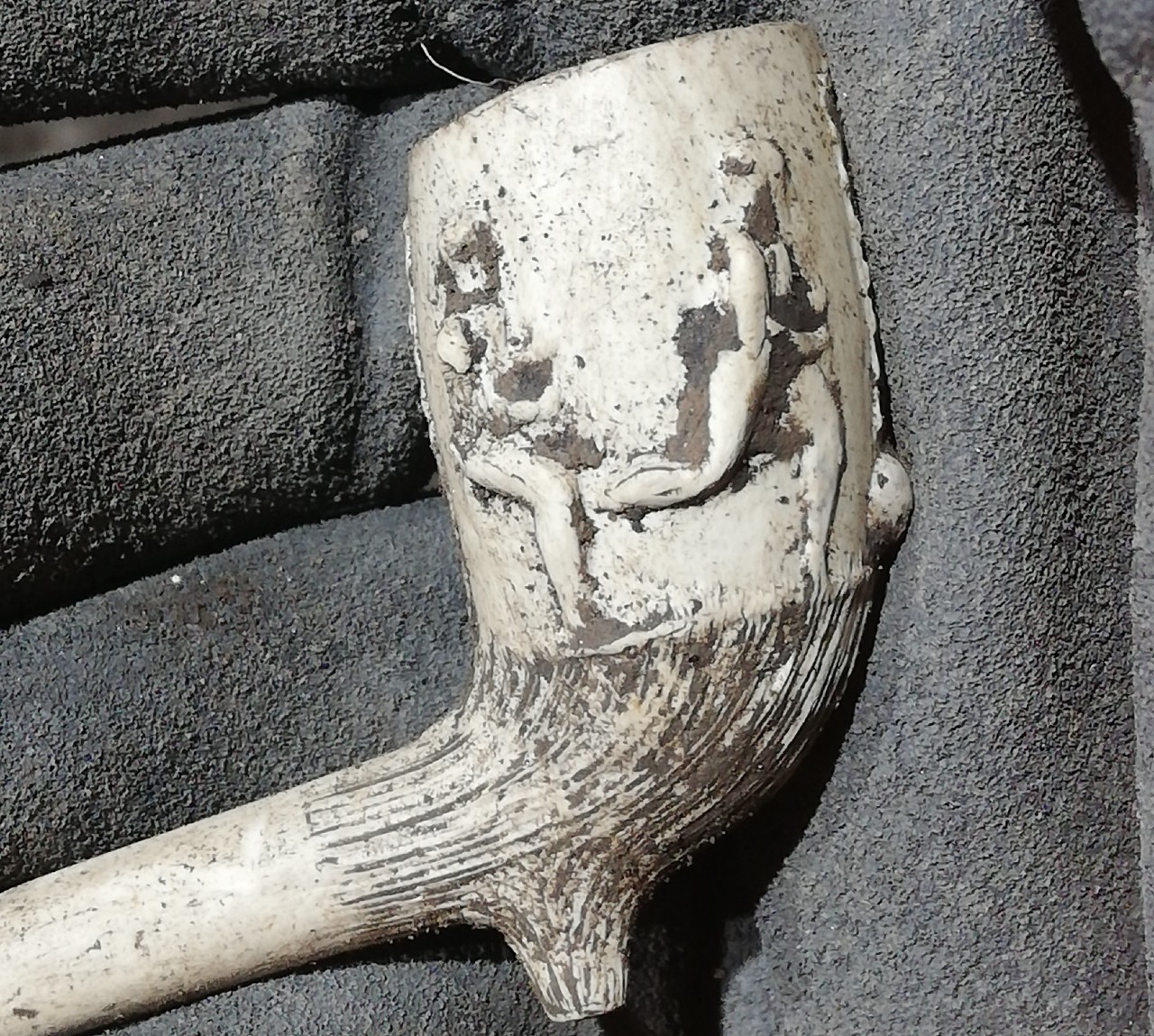
Domino
We found this small domino while sieving the excavated topsoil, barely an inch long and made from animal bone.
We’re not sure how it came to be in the graveyard, but it's tempting to imagine a game being played out on the flat slab capping one of the high-status tombs. Others have suggested that sailors used dominoes as a form of personal accounting among their ship mates.
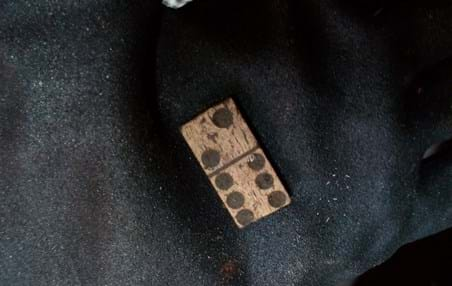
Clay pipe bowl
We also found this in the topsoil, a substantially complete clay pipe bowl.
The headdress and moustachios would suggest that this represented a Turk's head, a popular design in the later 19th and early 20th century.
Such pipes were made in moulds and this example retains some hand-painted details. In this case there is no evidence for sooting in the bowl, indicating that it may have suffered a mishap before it could be used.
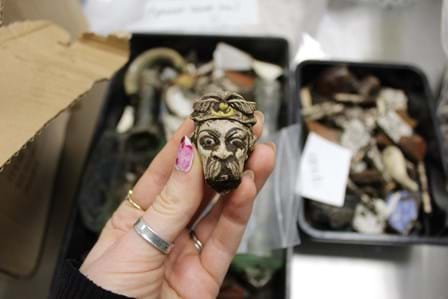
Medieval floor tile fragments
These are fragments of medieval floor tiles. They have been decorated with stamp leave impressions into which very runny clay has been poured. The one on the right seems to preserve the rear end of a heraldic beast, perhaps a lion. Such tiles would have been set to form geometric patterns in parts of high status and religious buildings.
These ones may have originated from Holy Trinity Church (Hull Minster): it is said that some of the arisings from the excavation of the crypt in the 19th century were deposited at Castle Street.
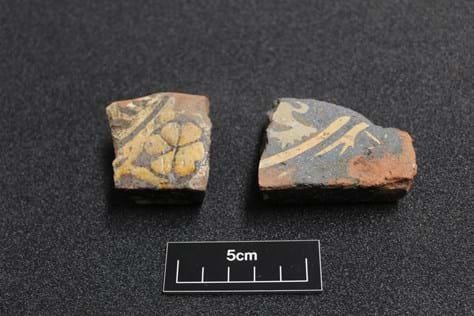
Keep in touch with what we're doing
Sign up for email bulletins about our archaeological work around Castle Street - we'll let you know when we have new findings and when a new insight is posted.
